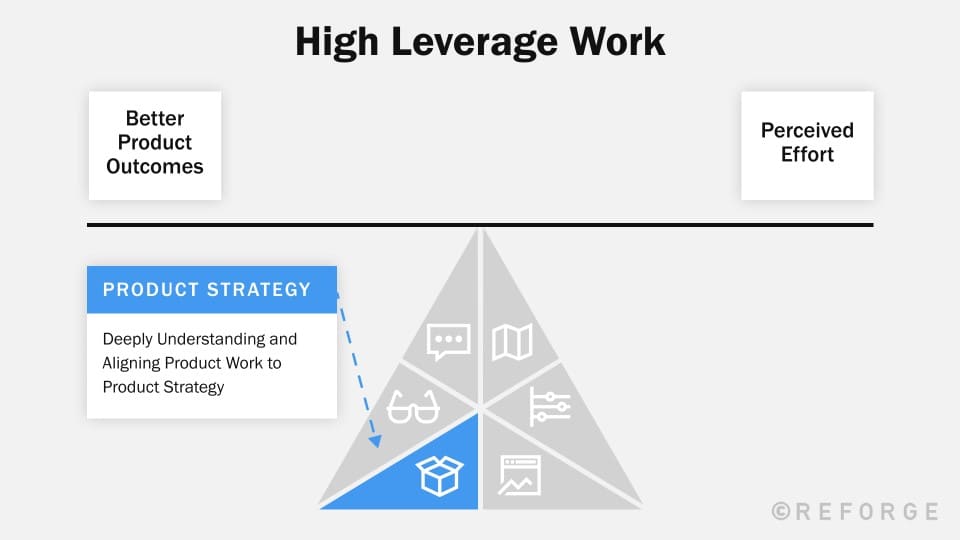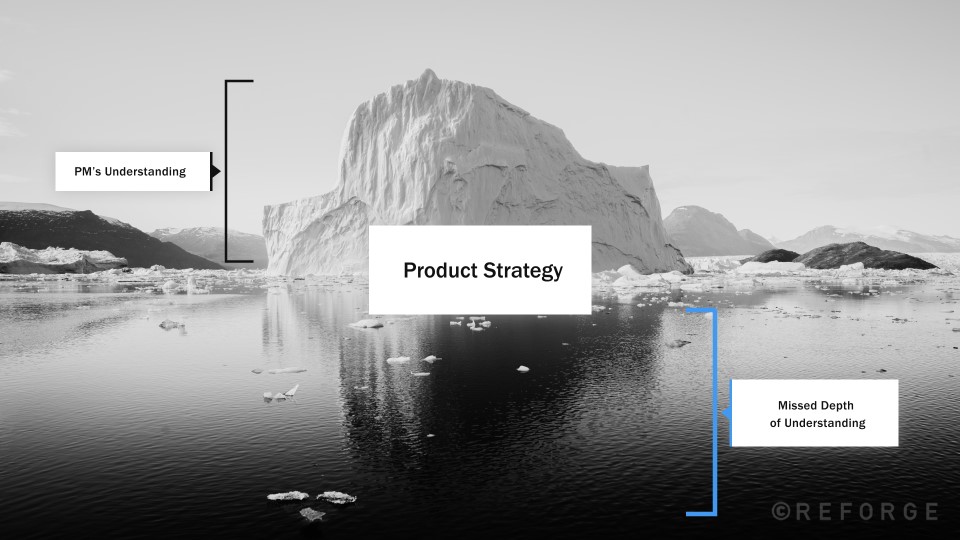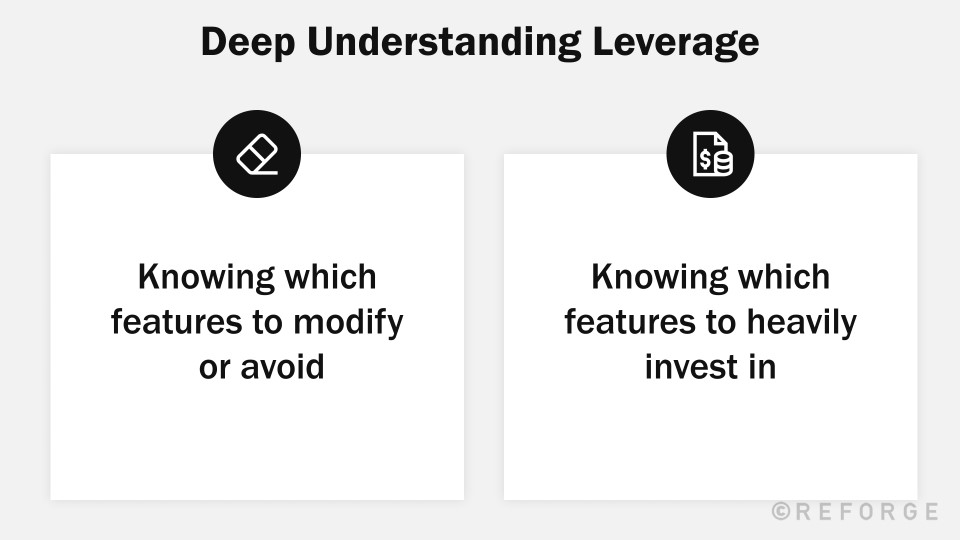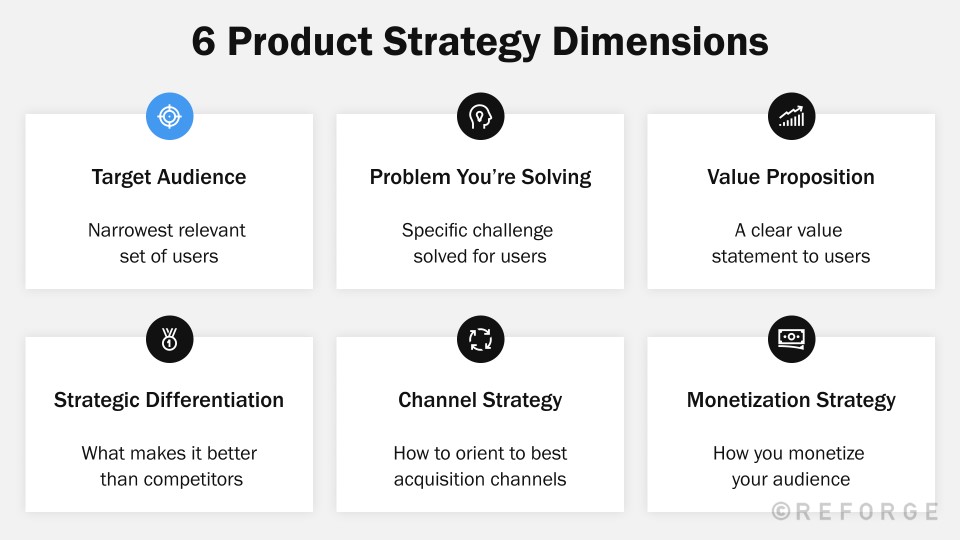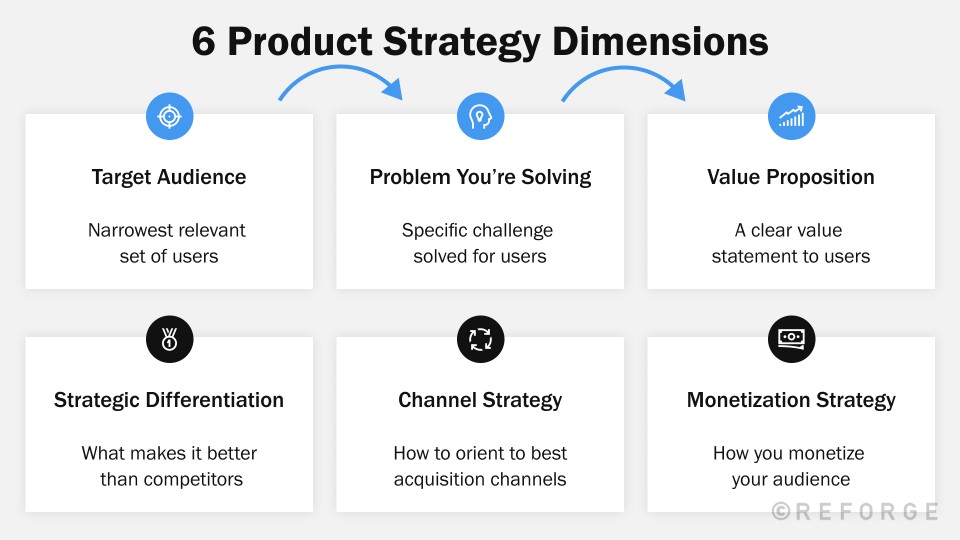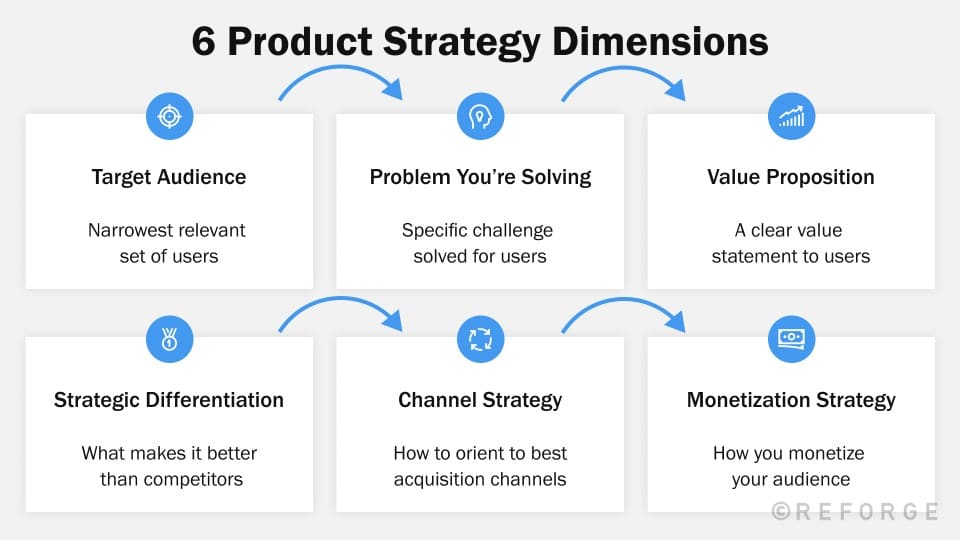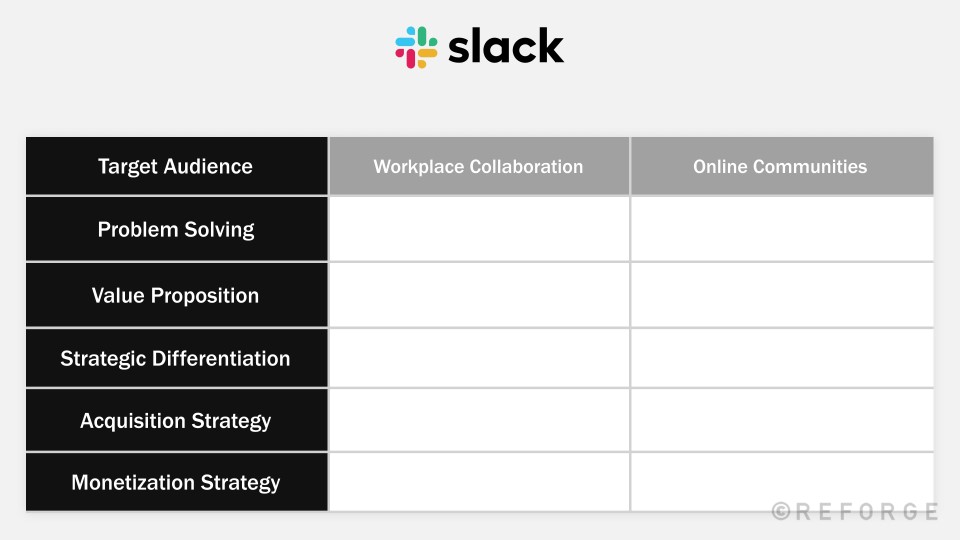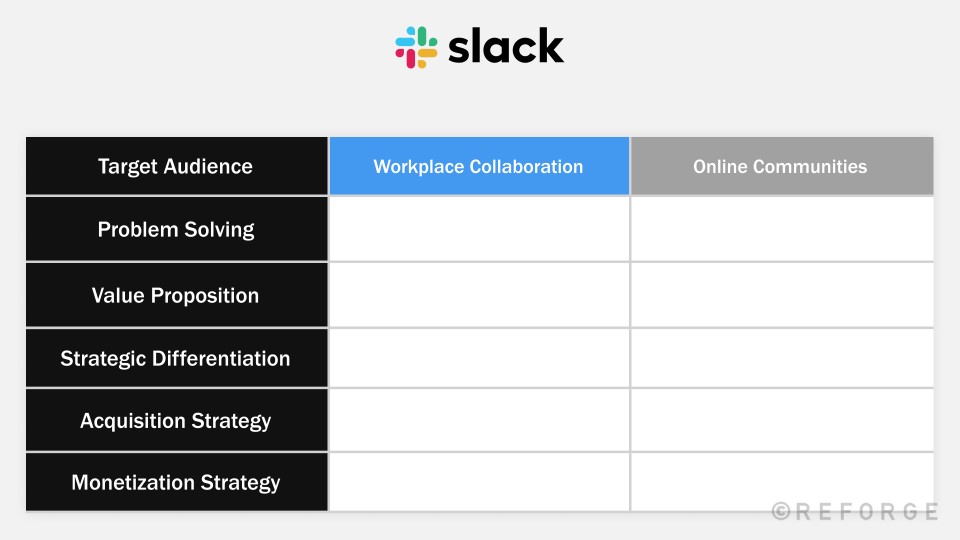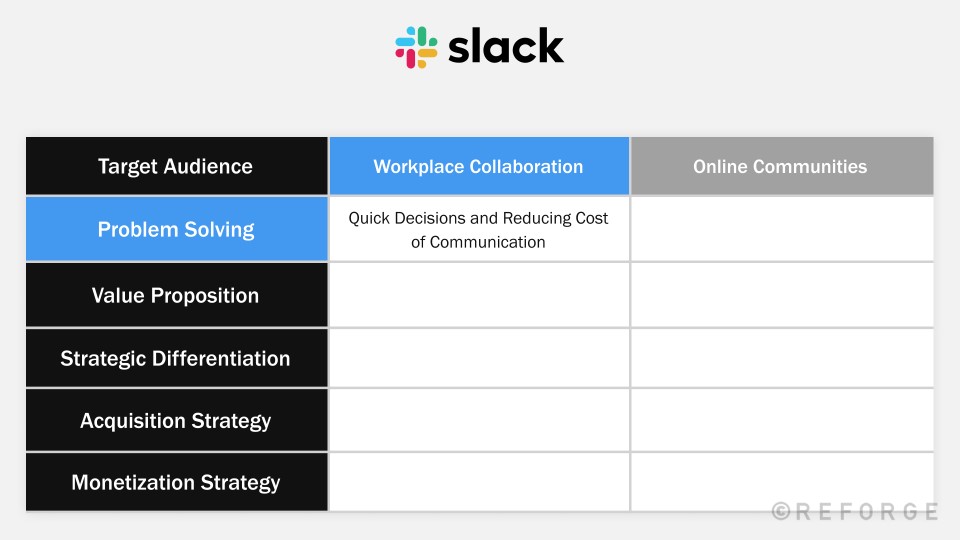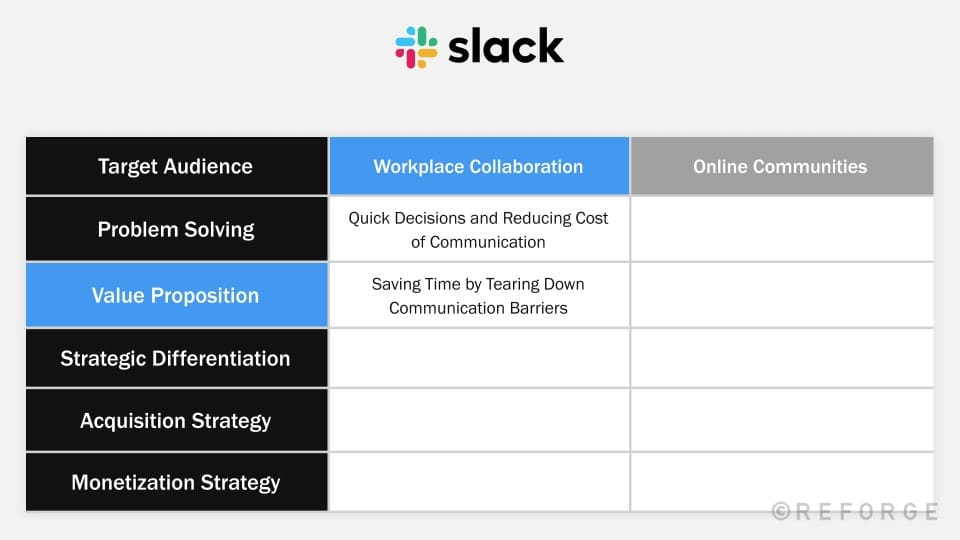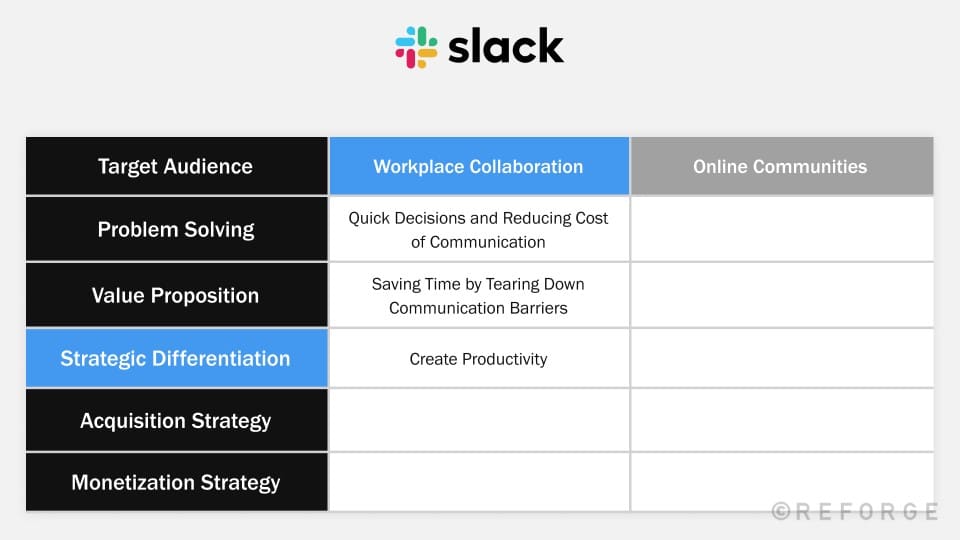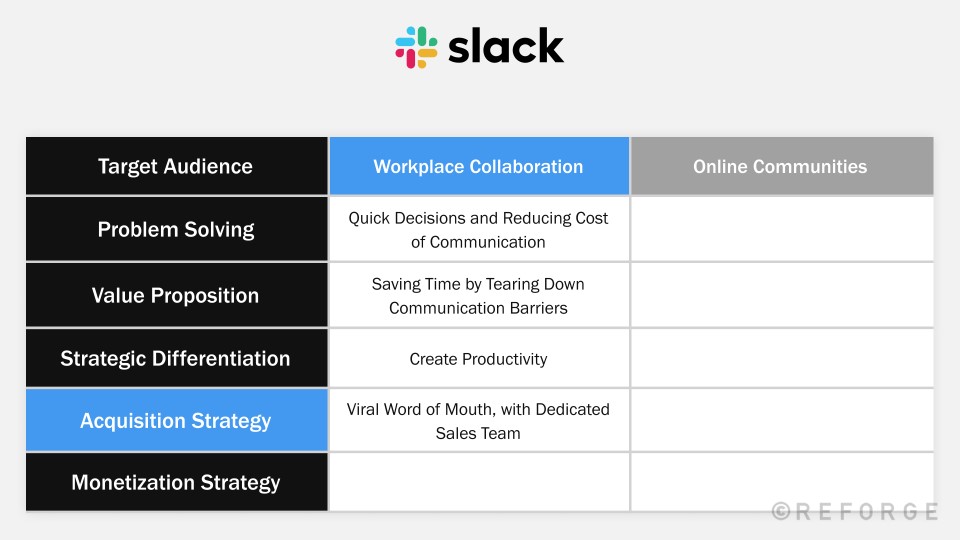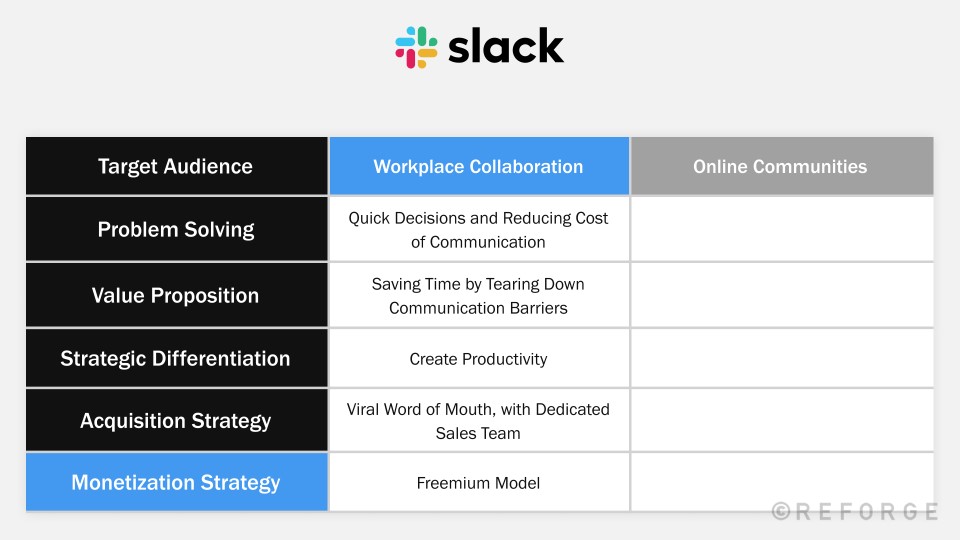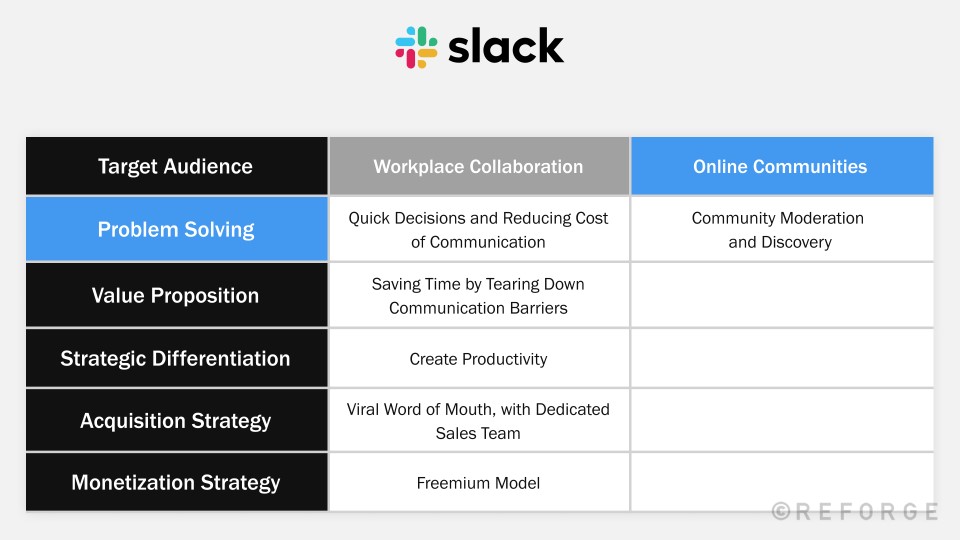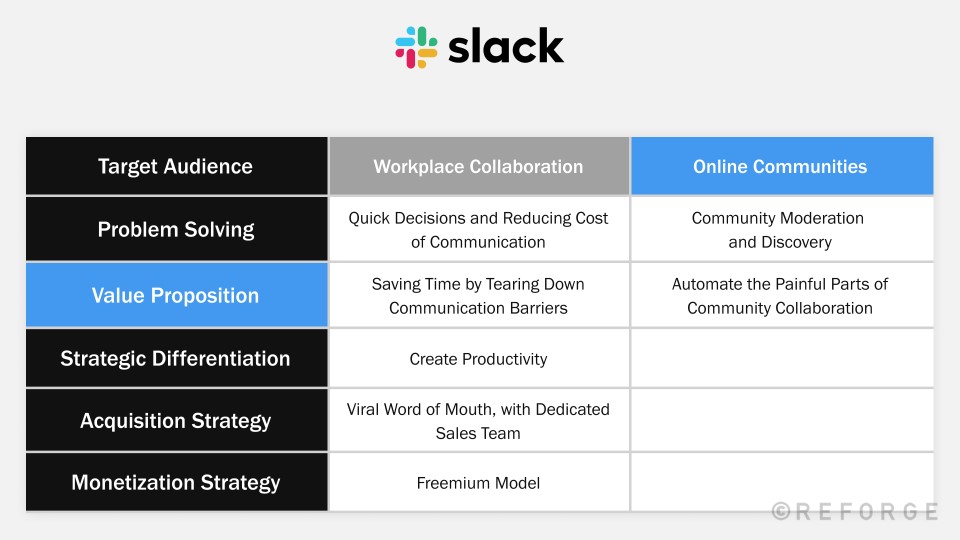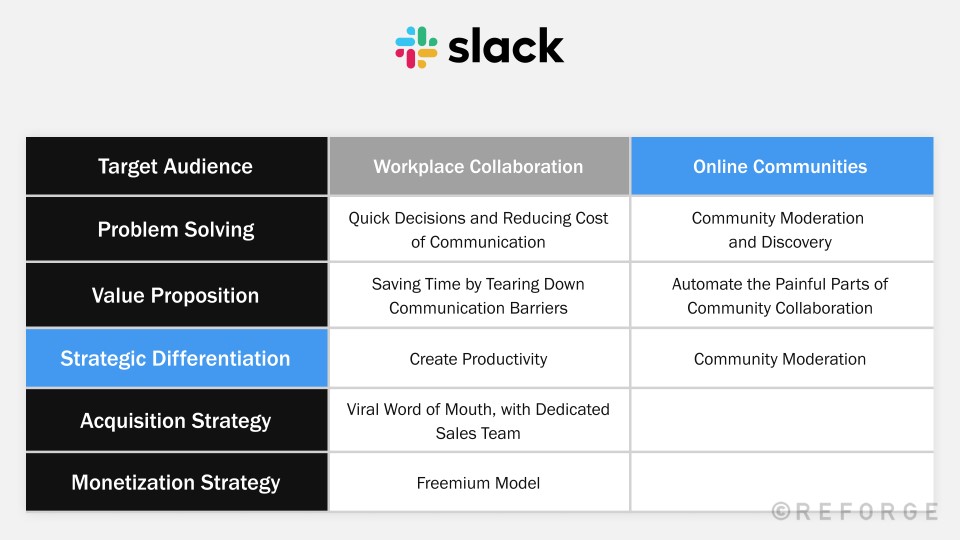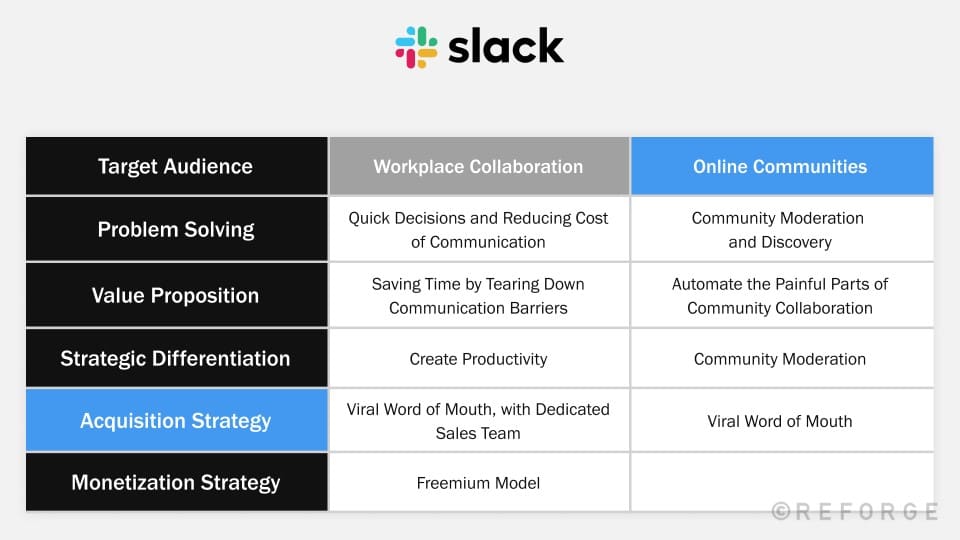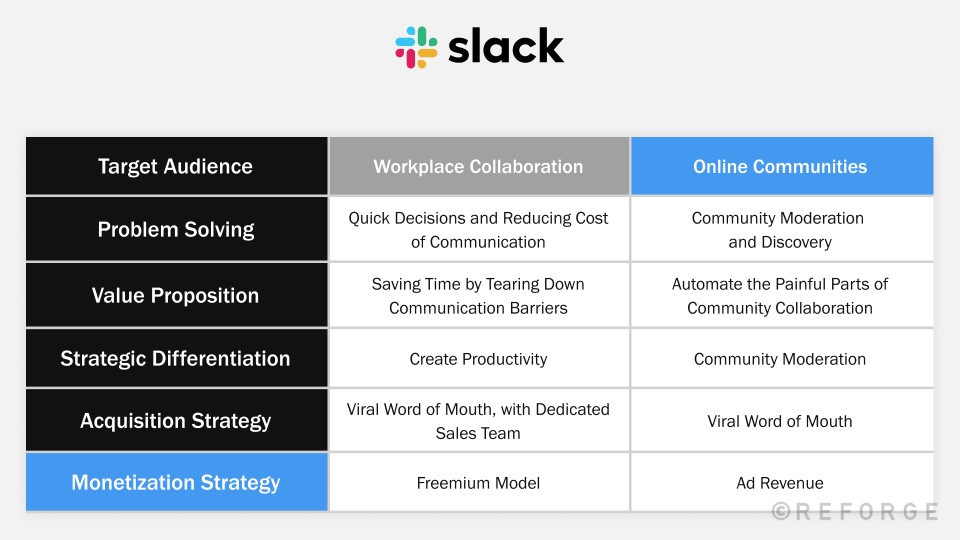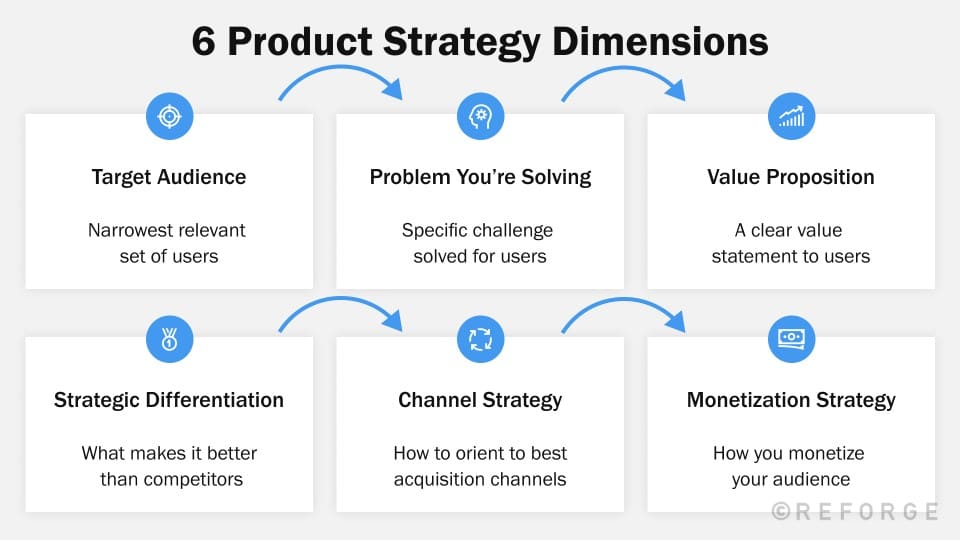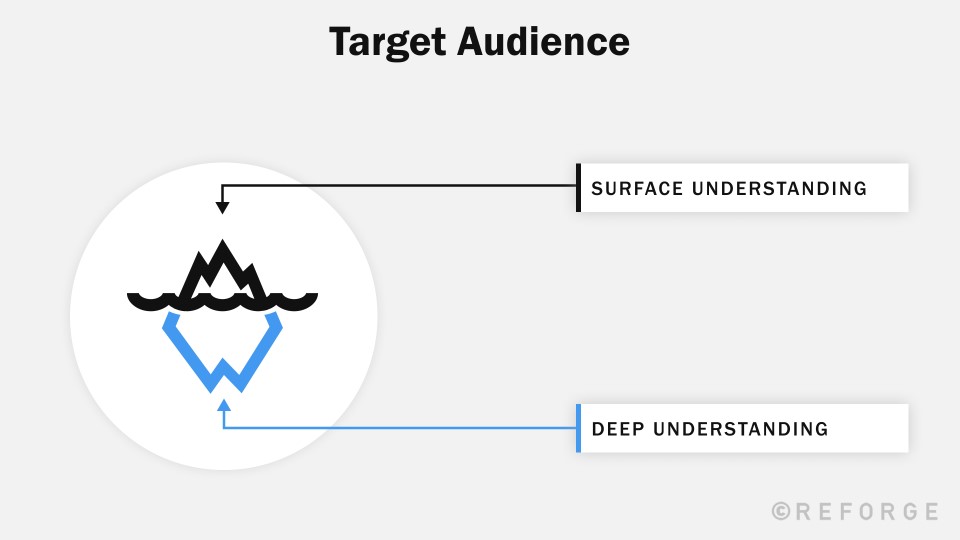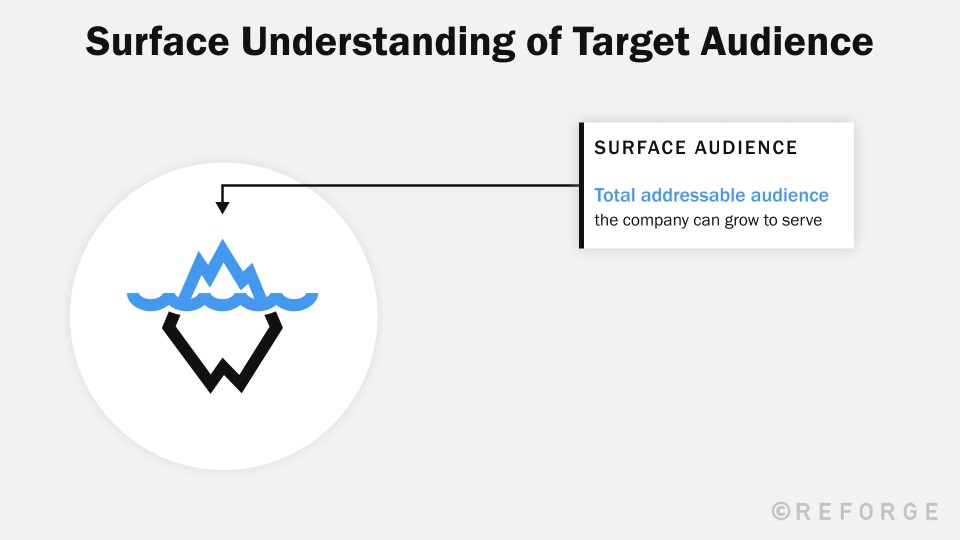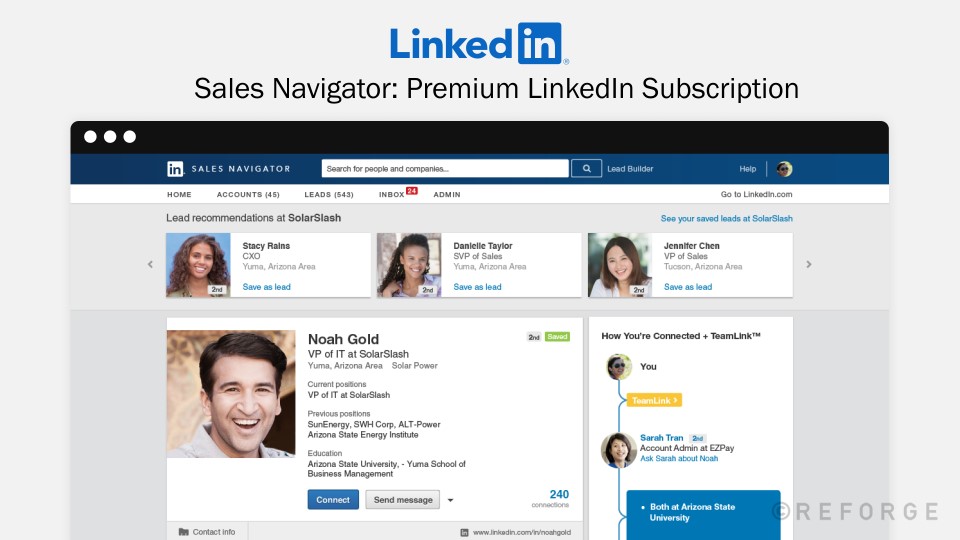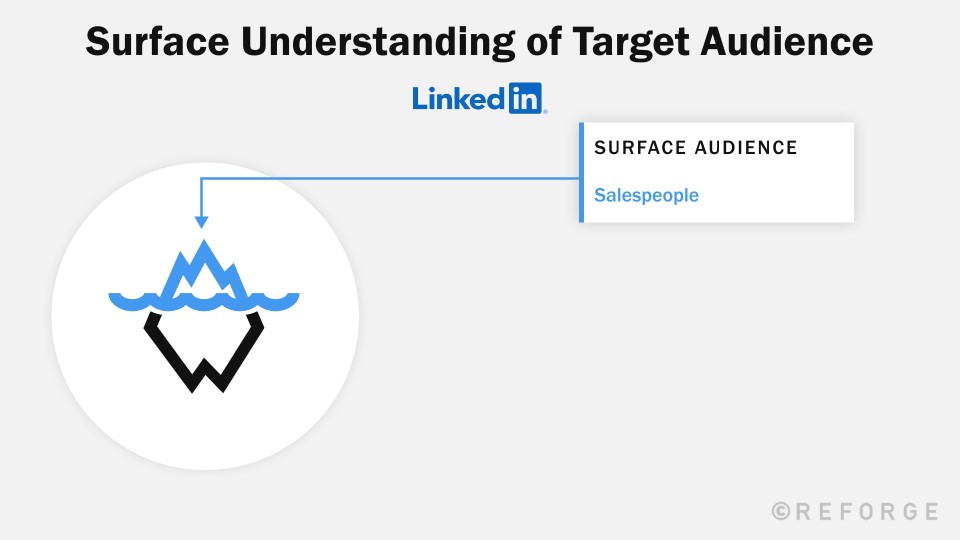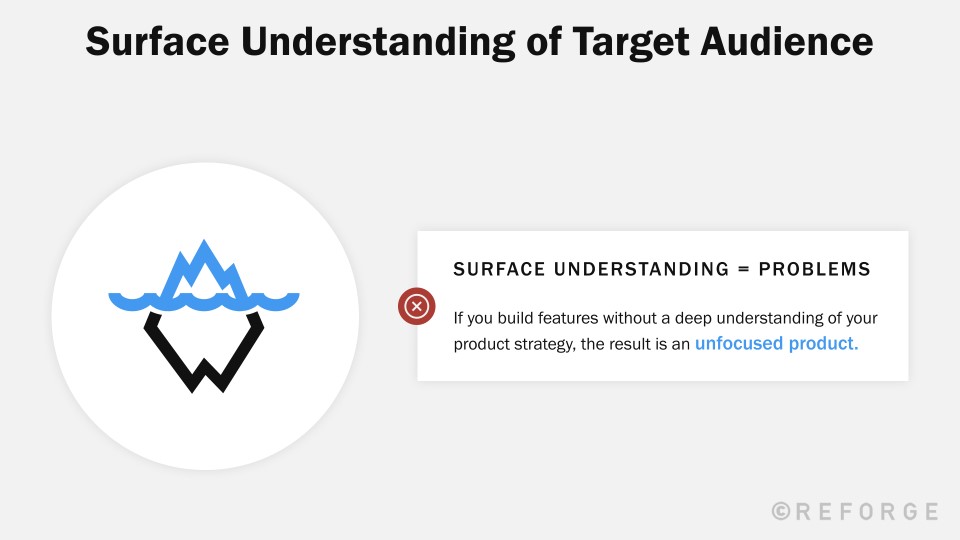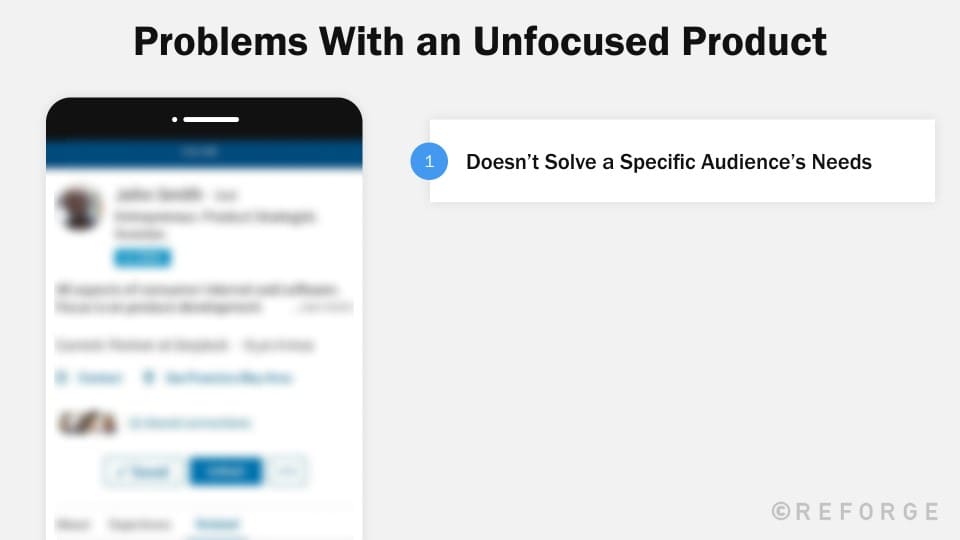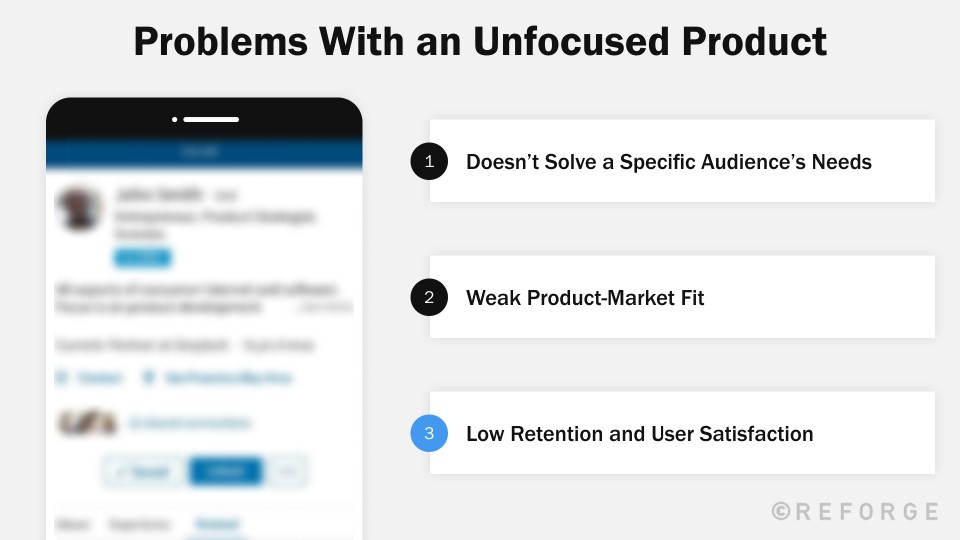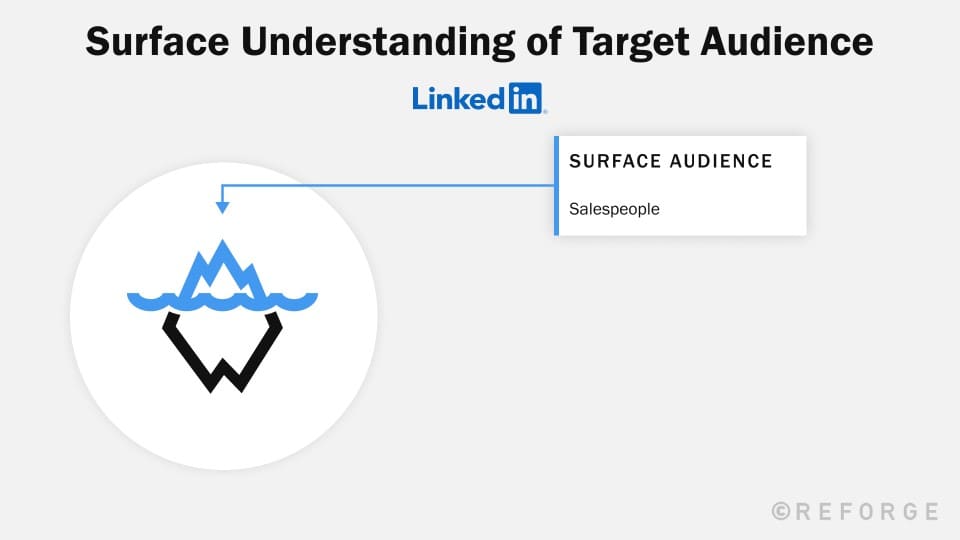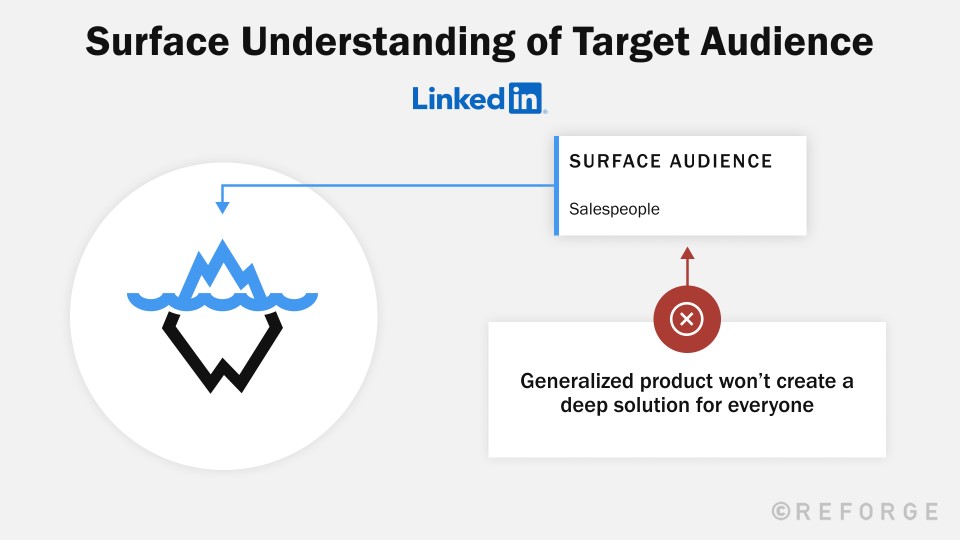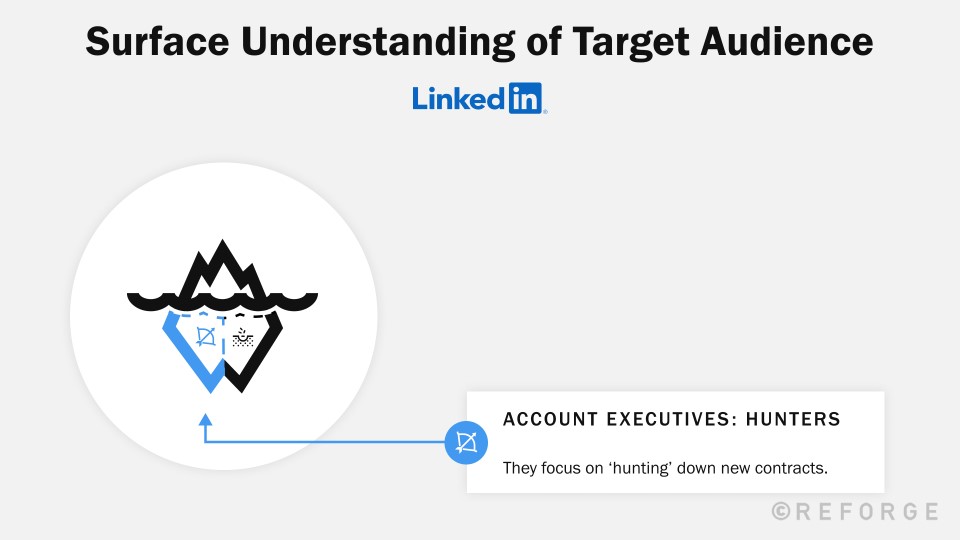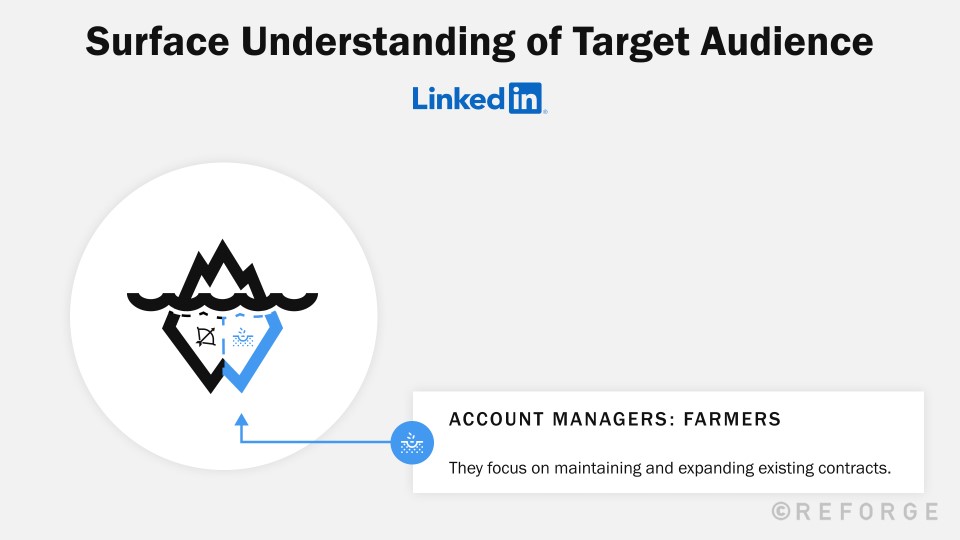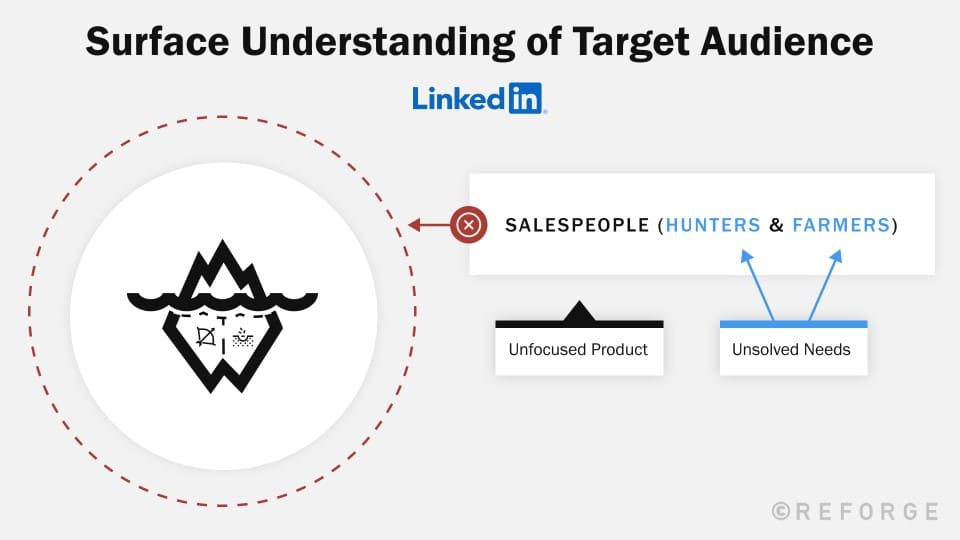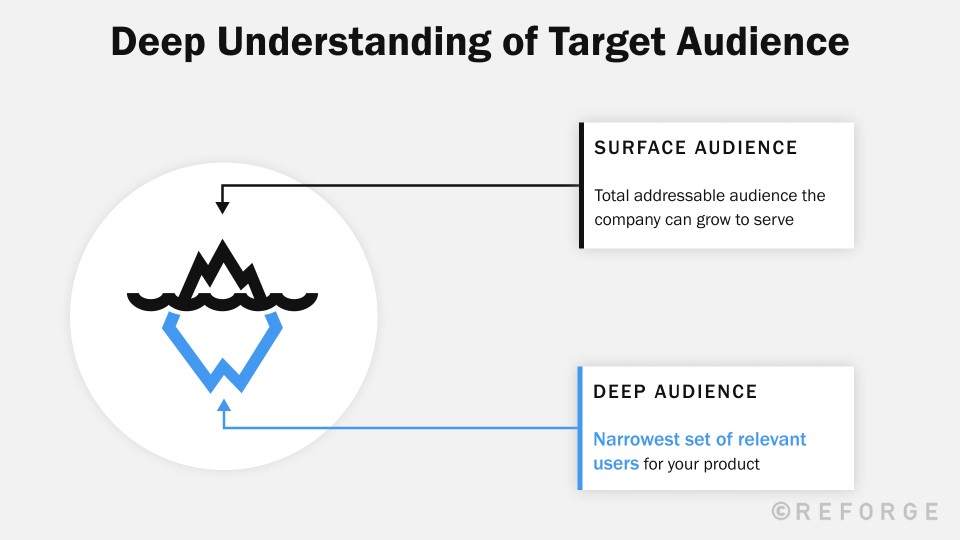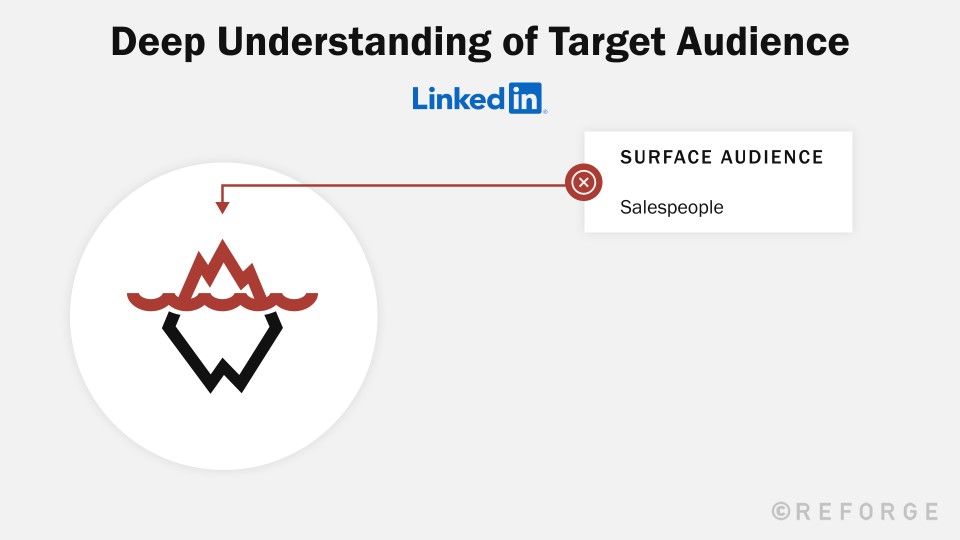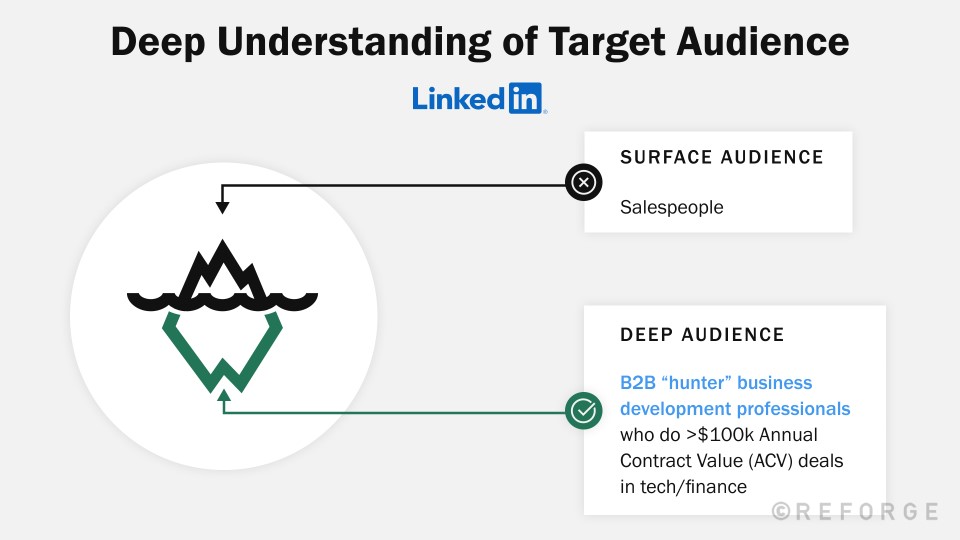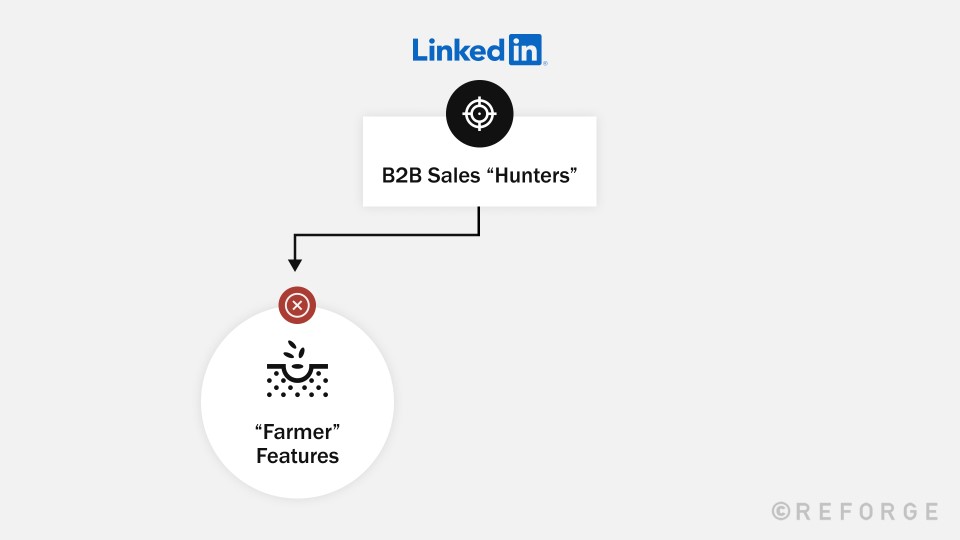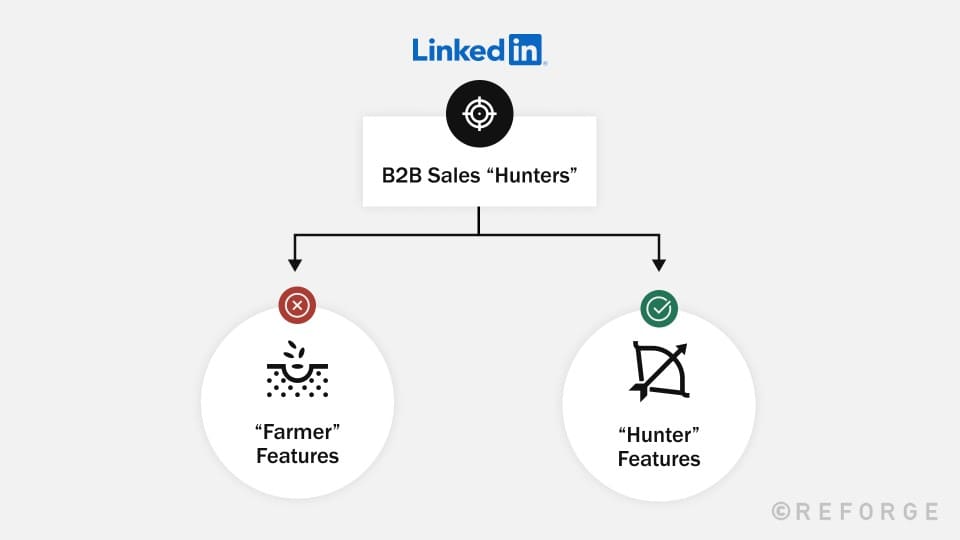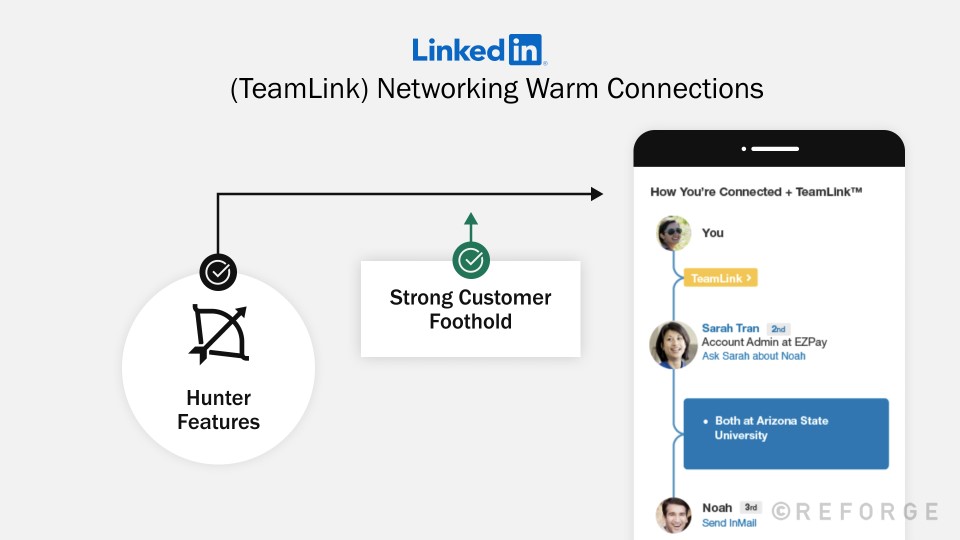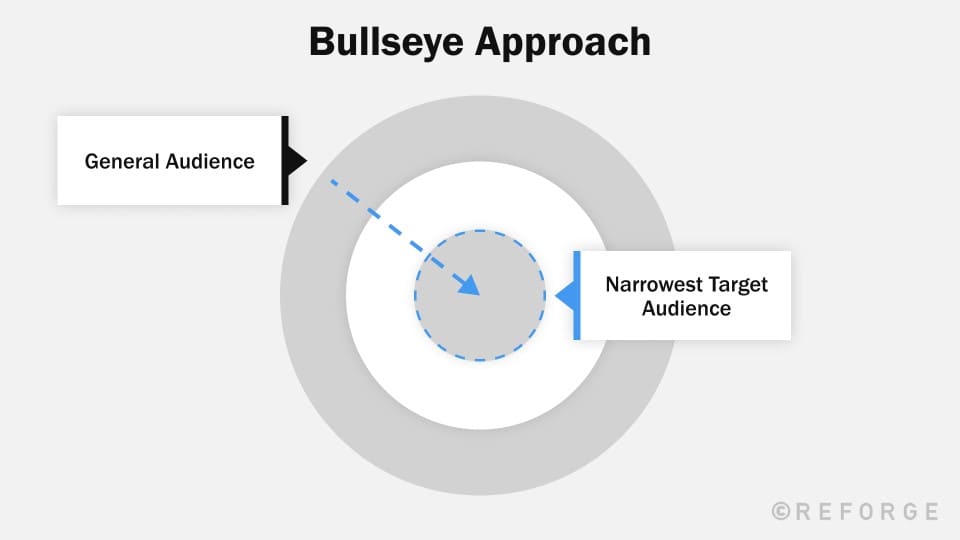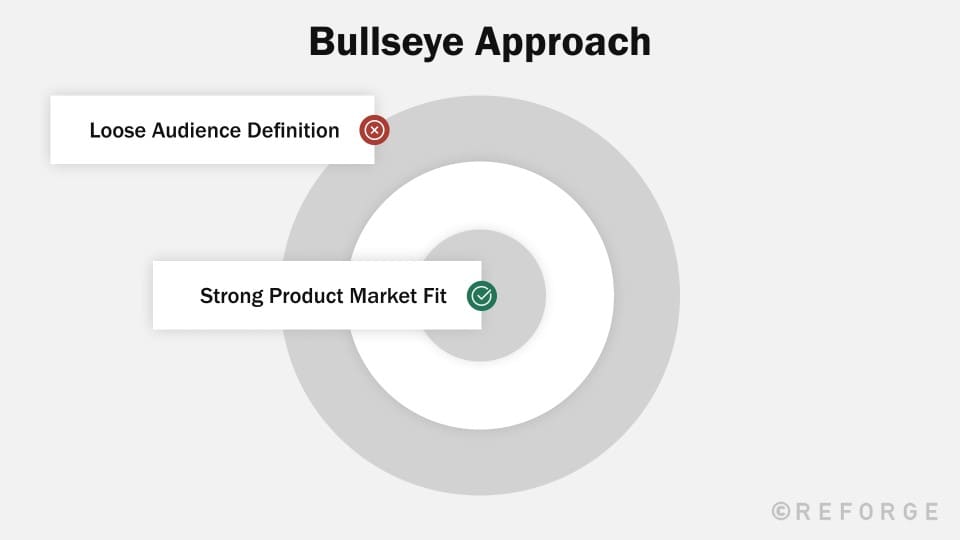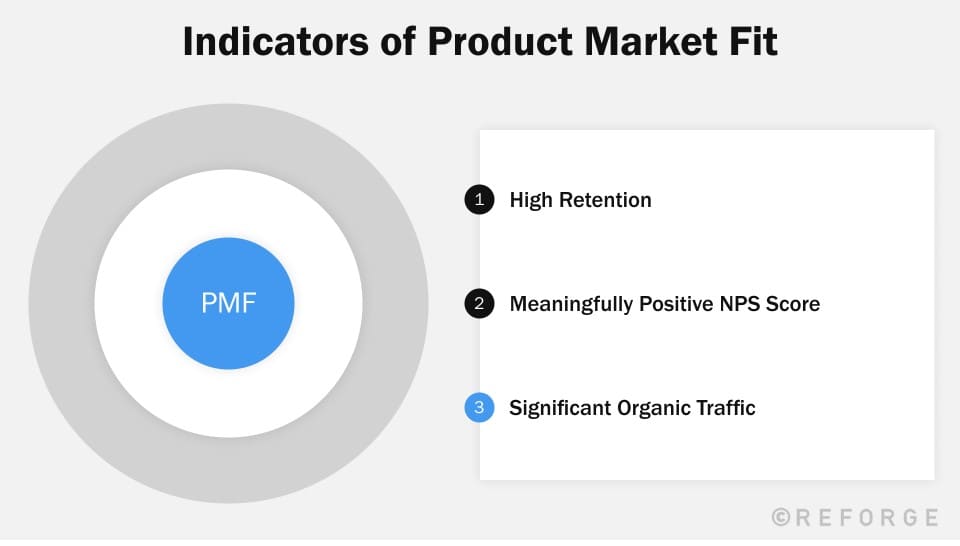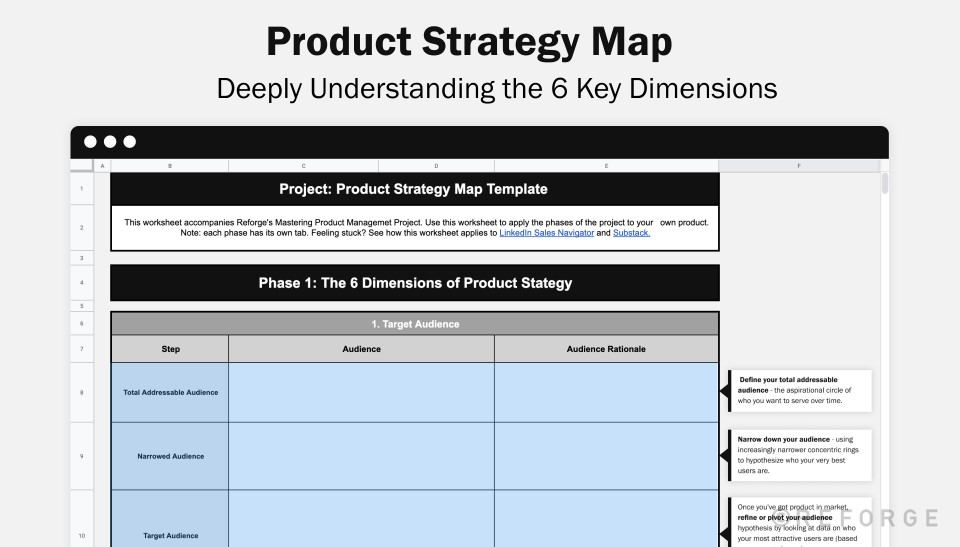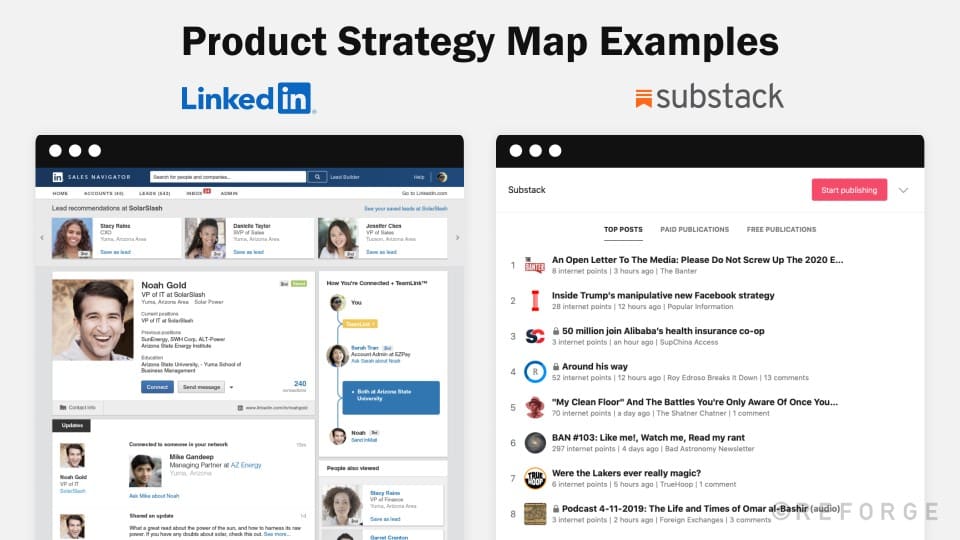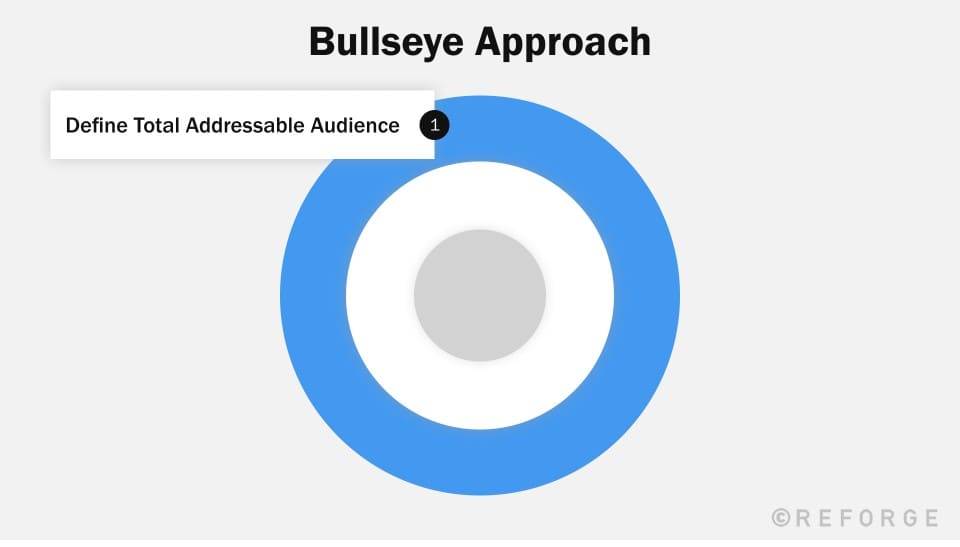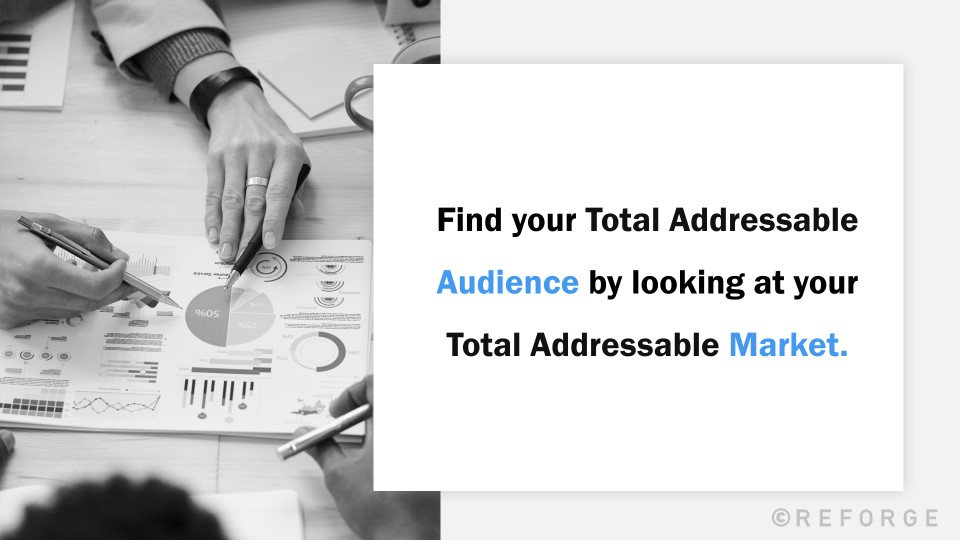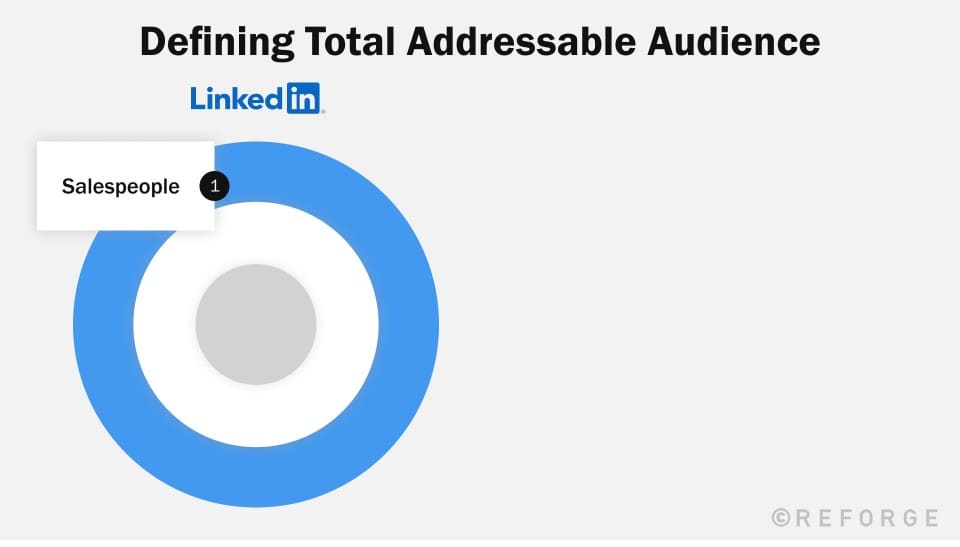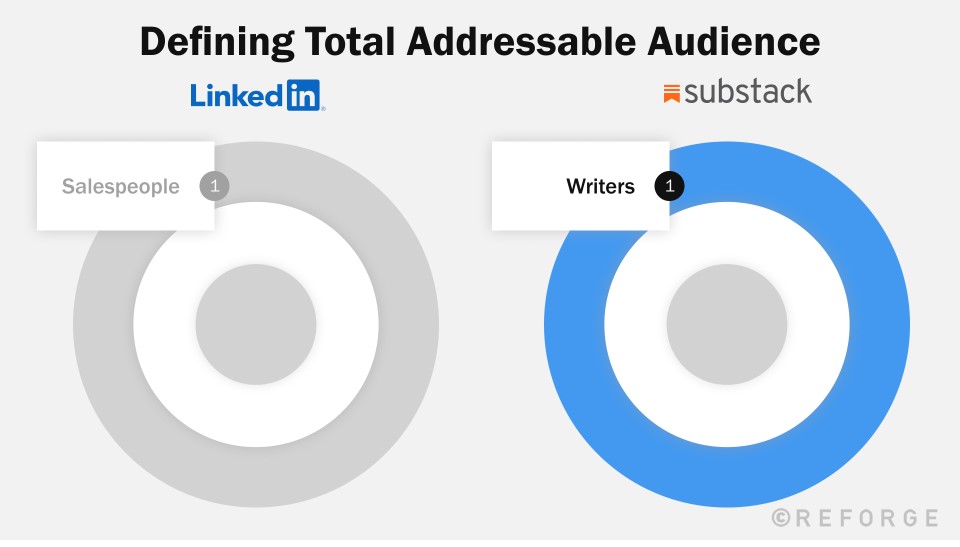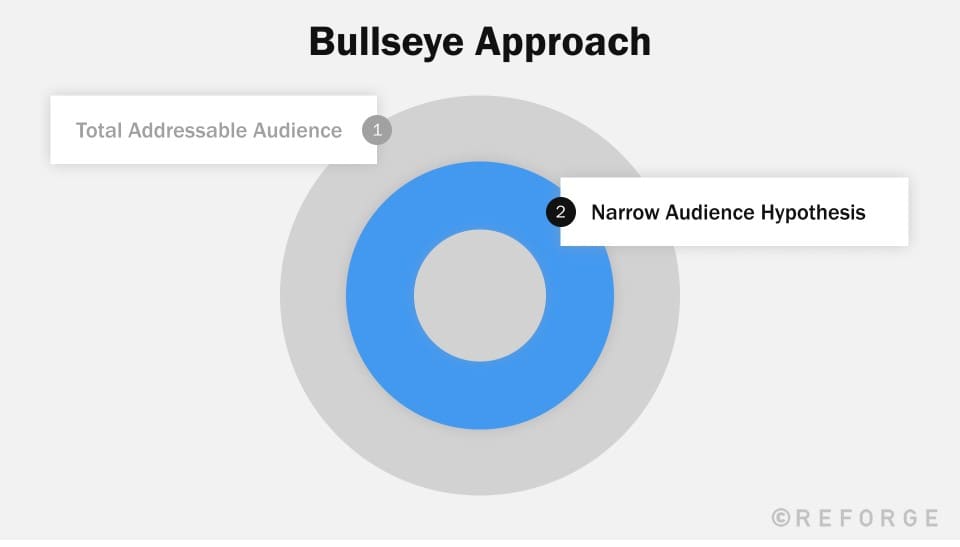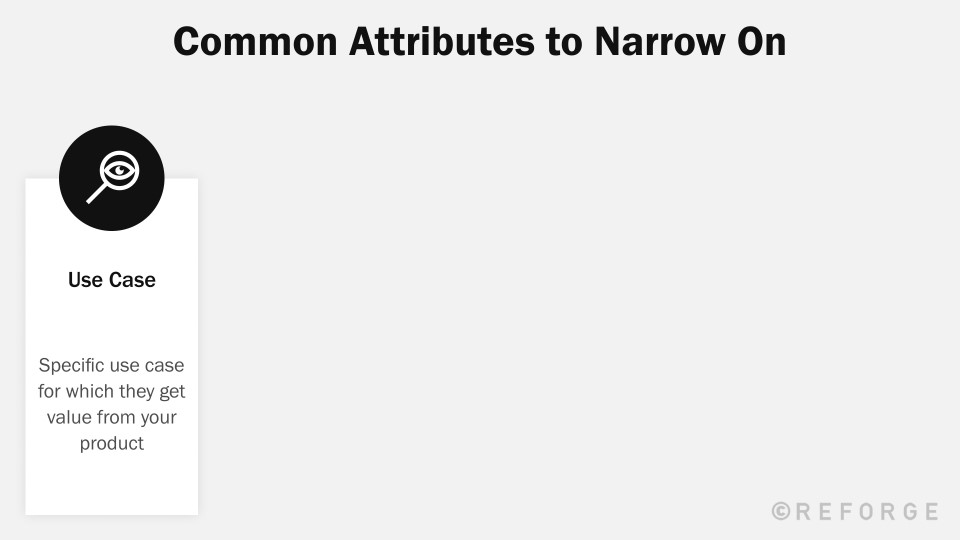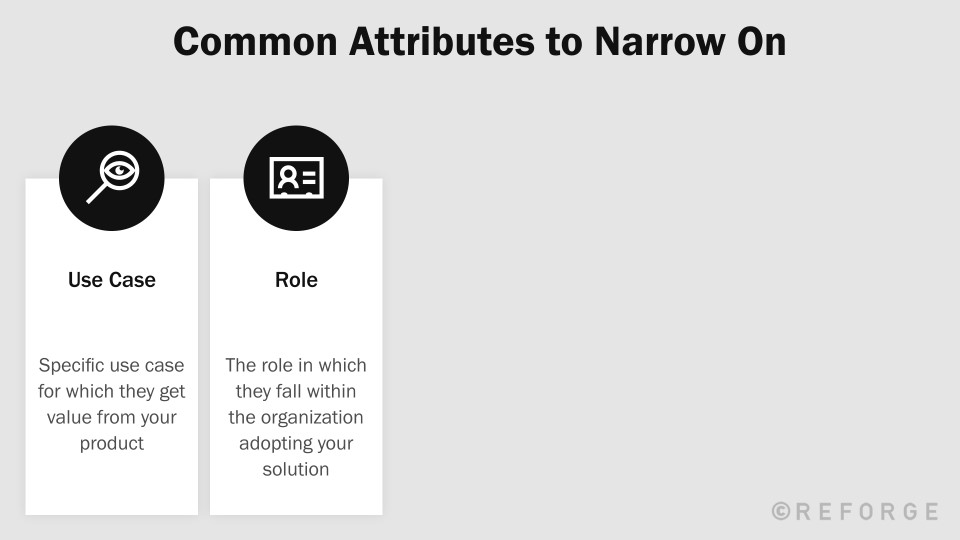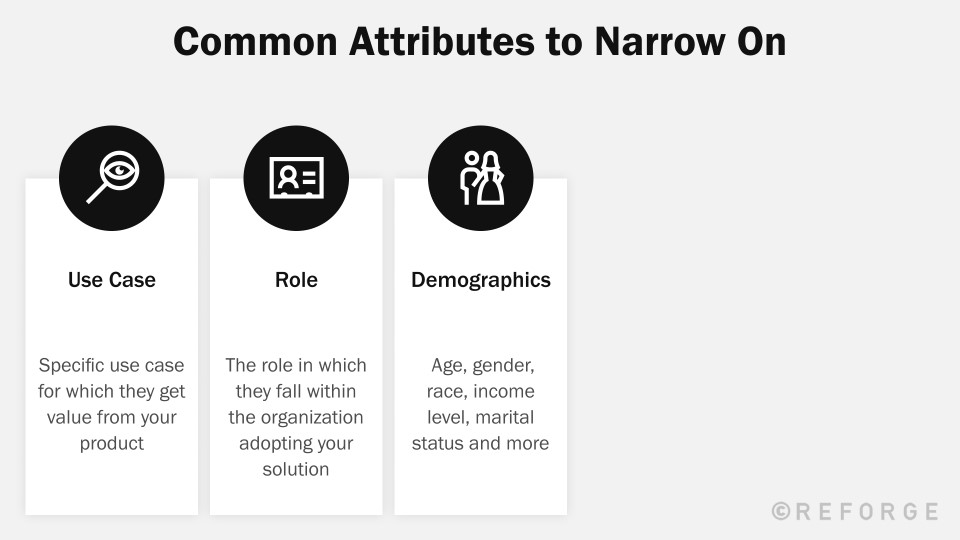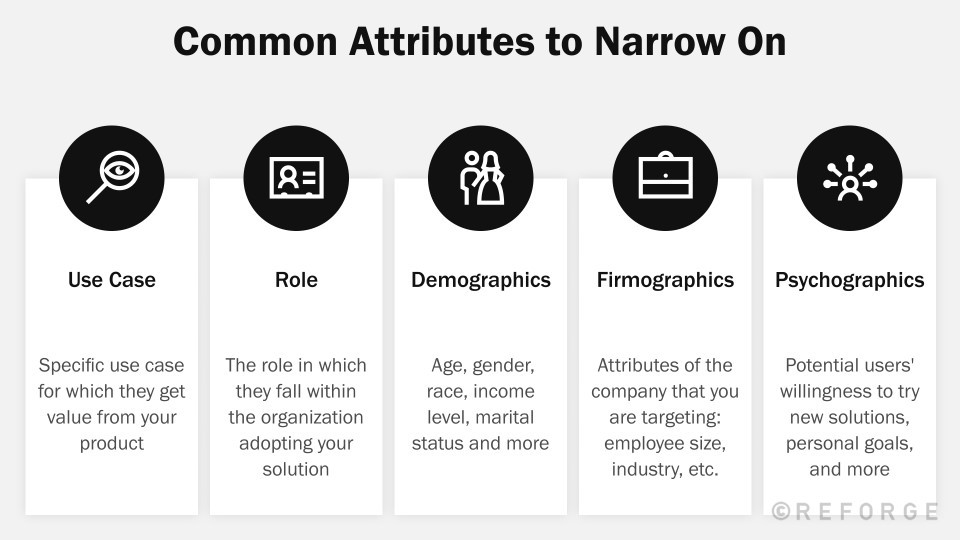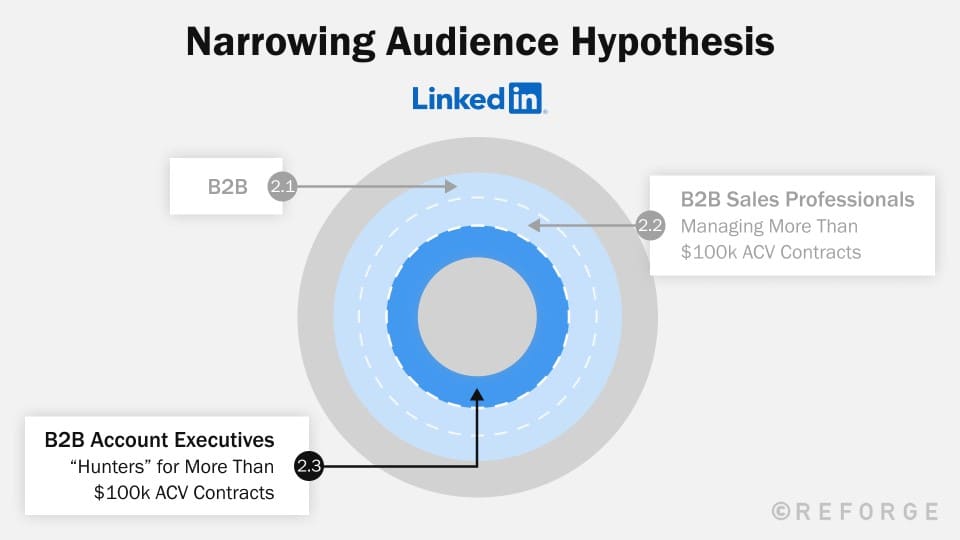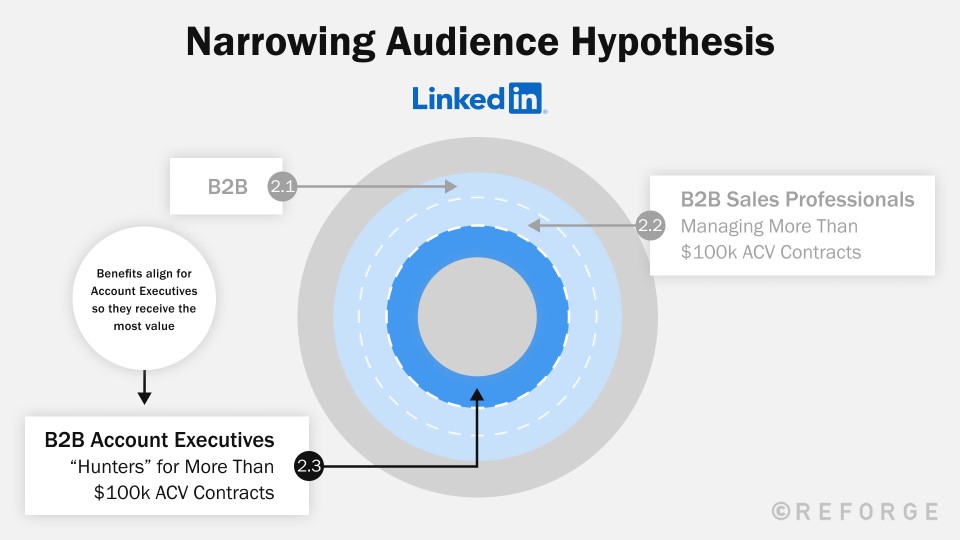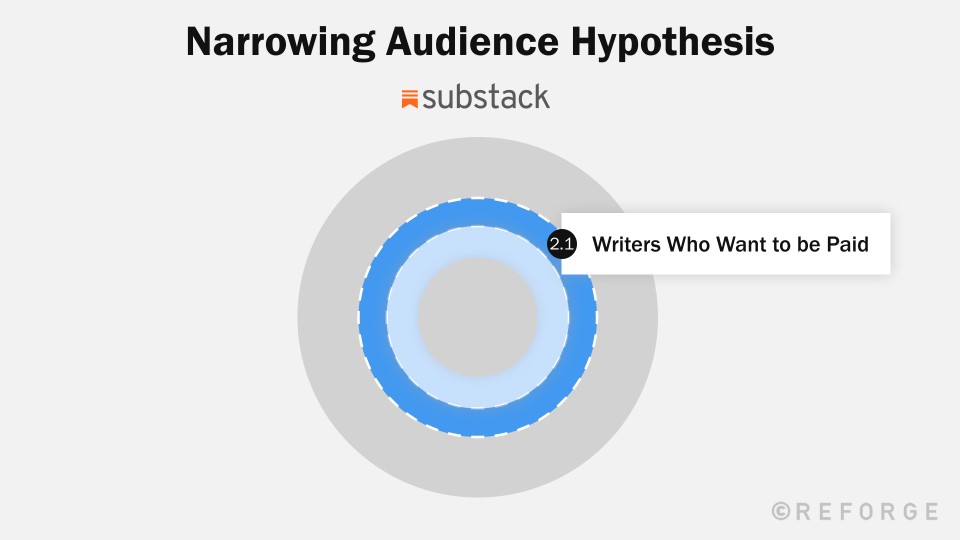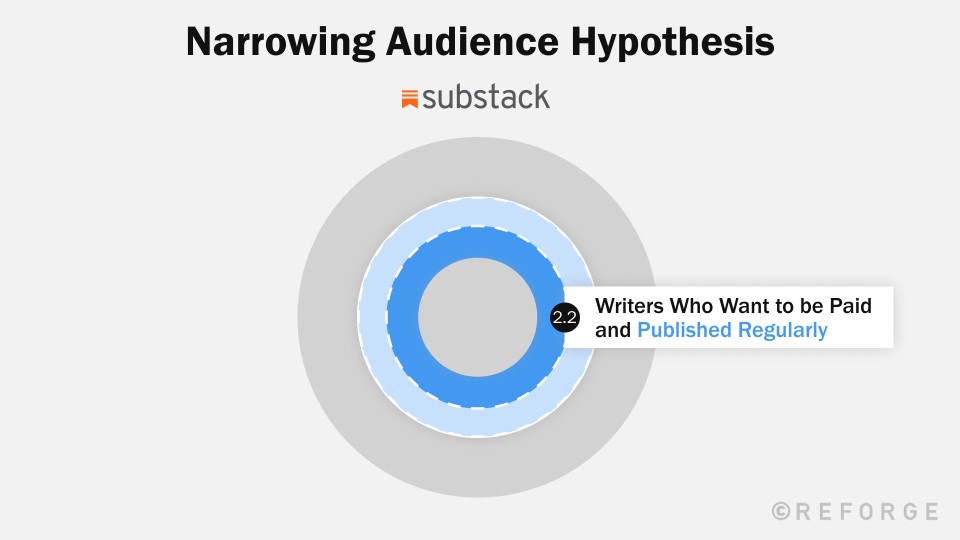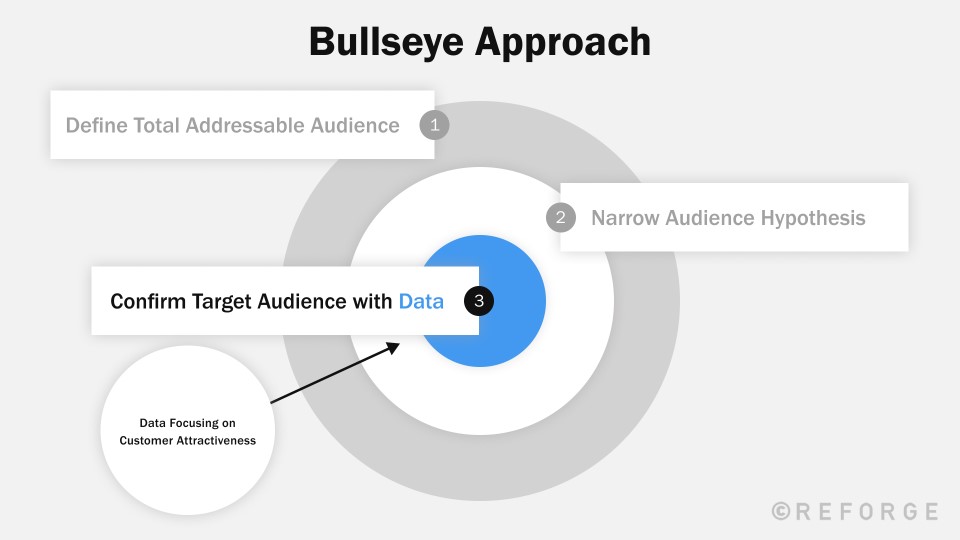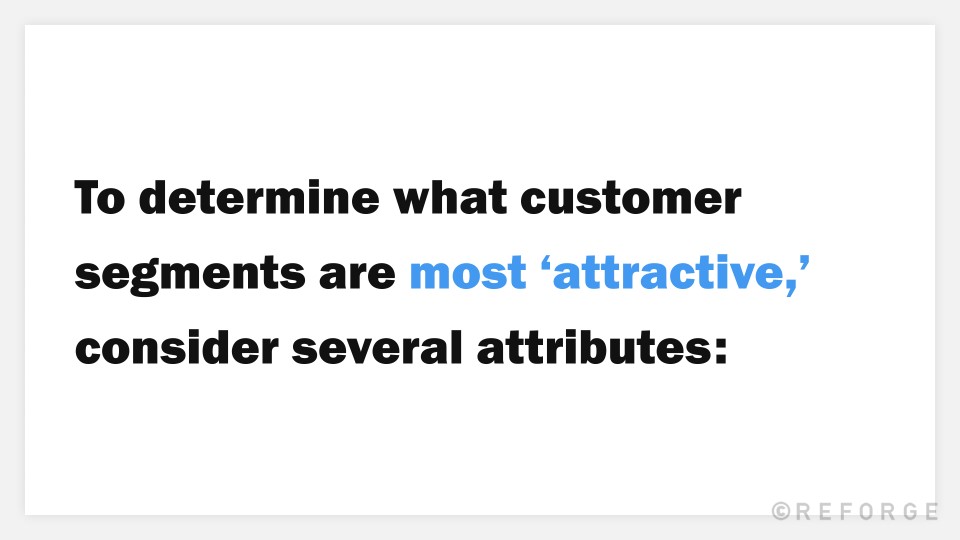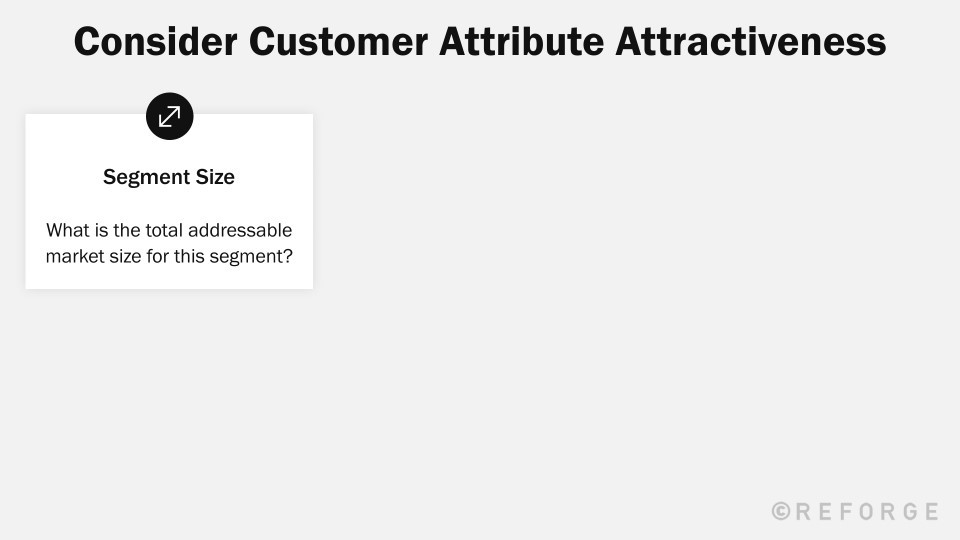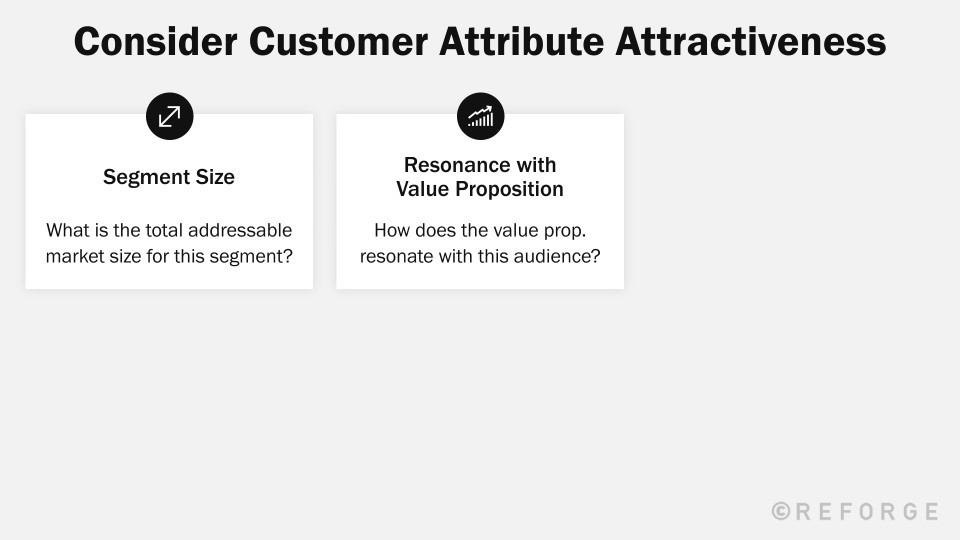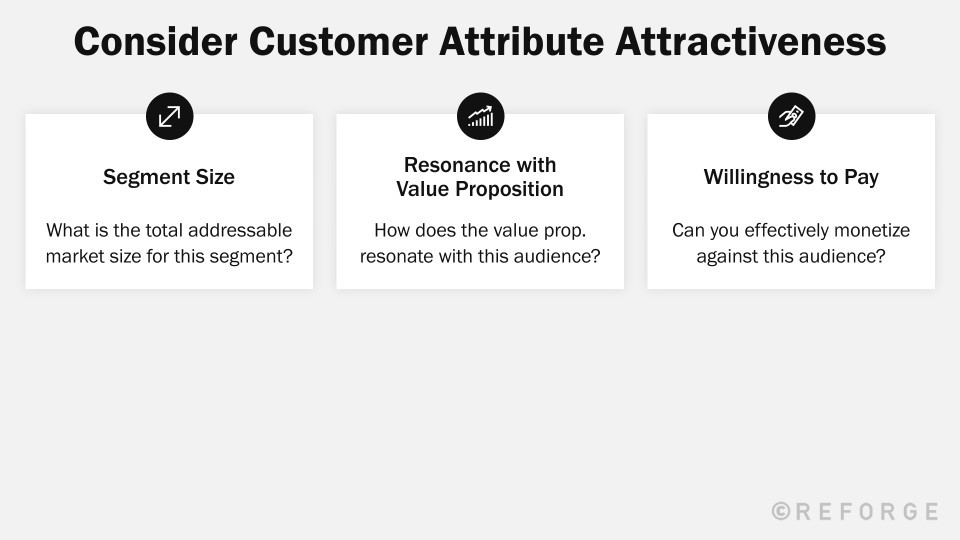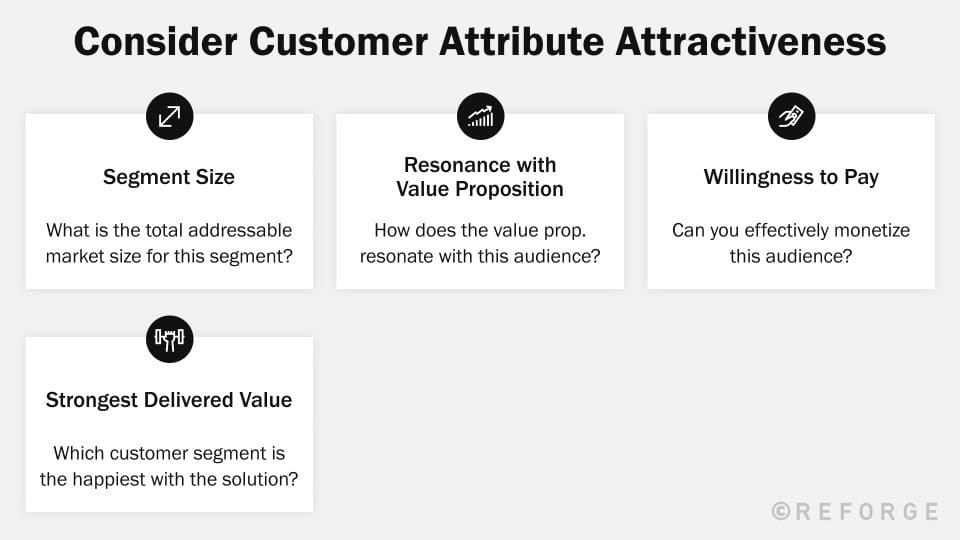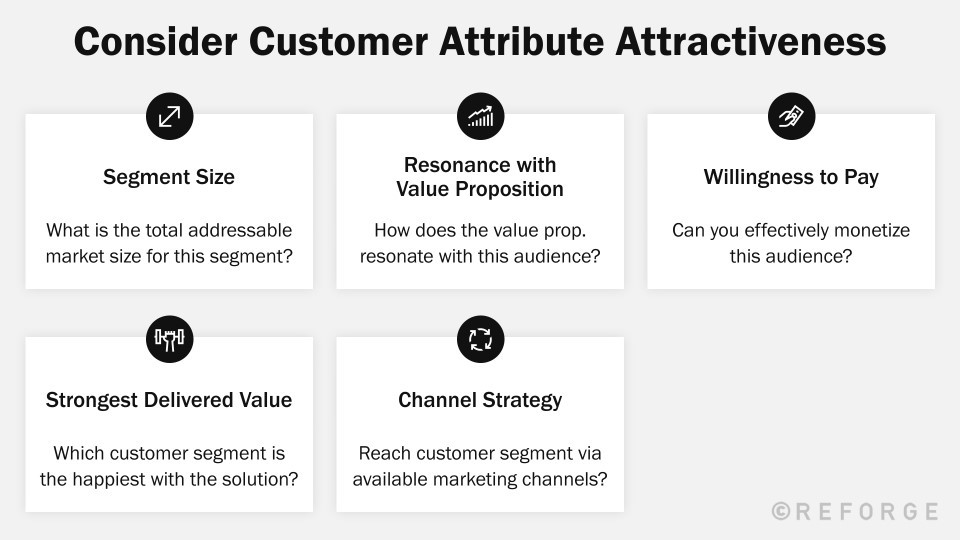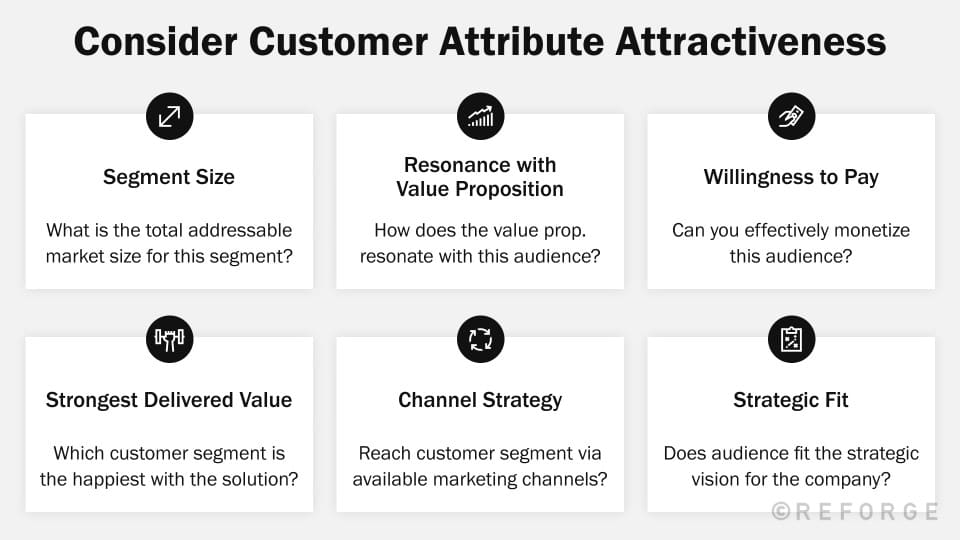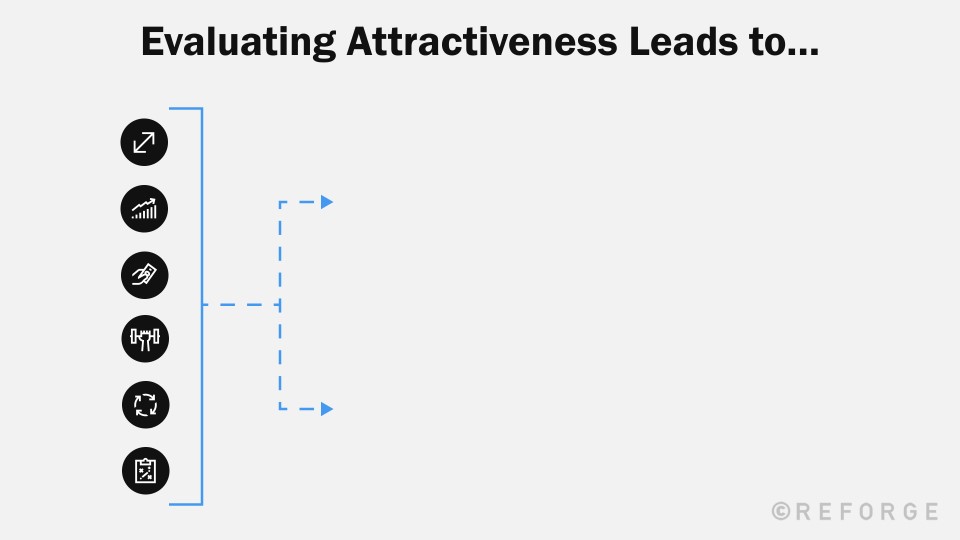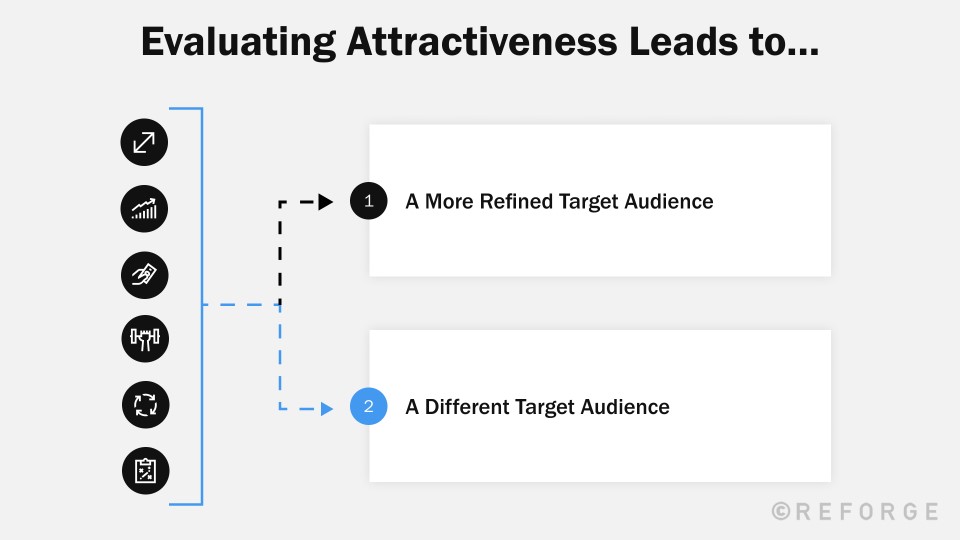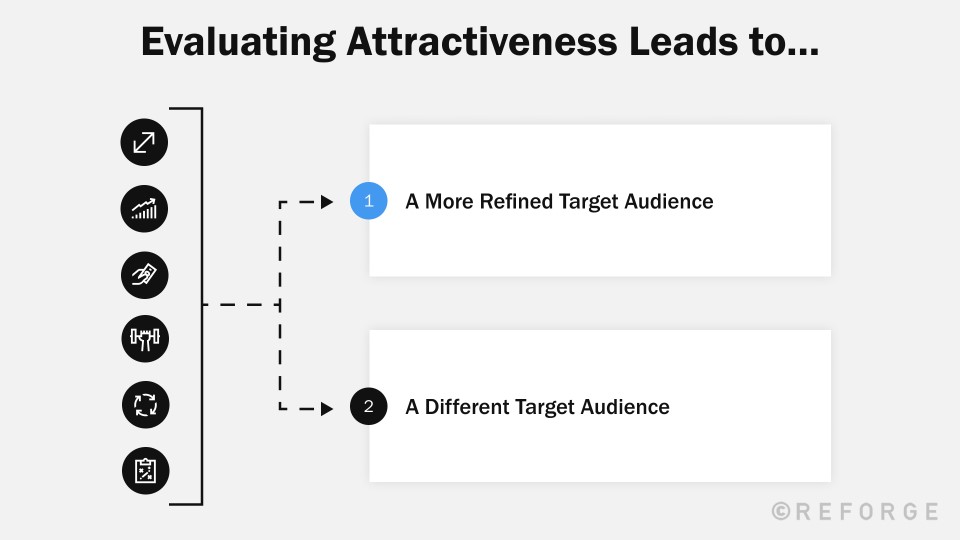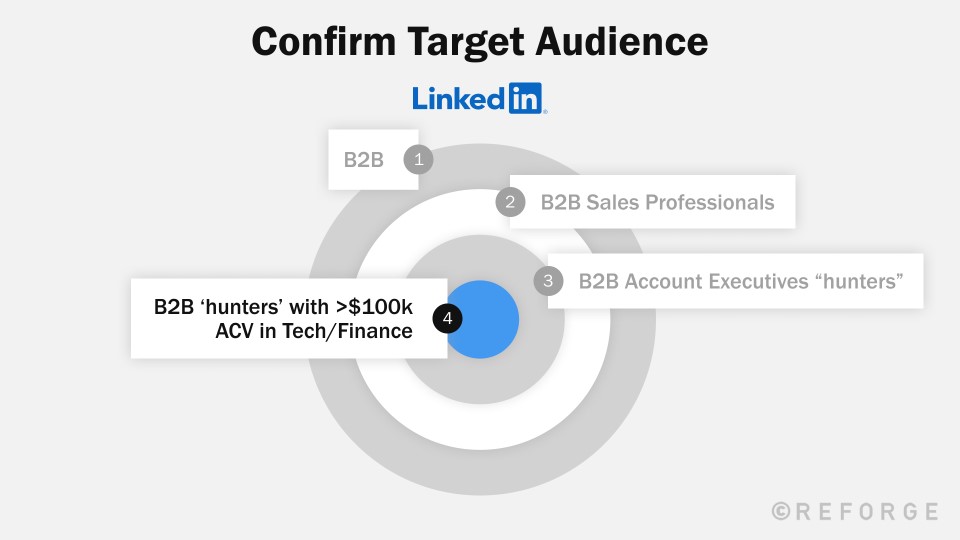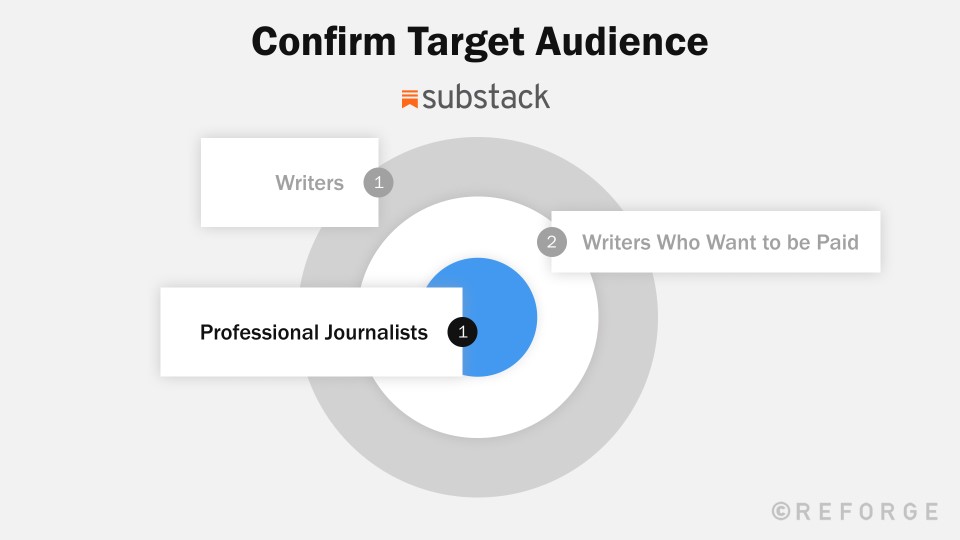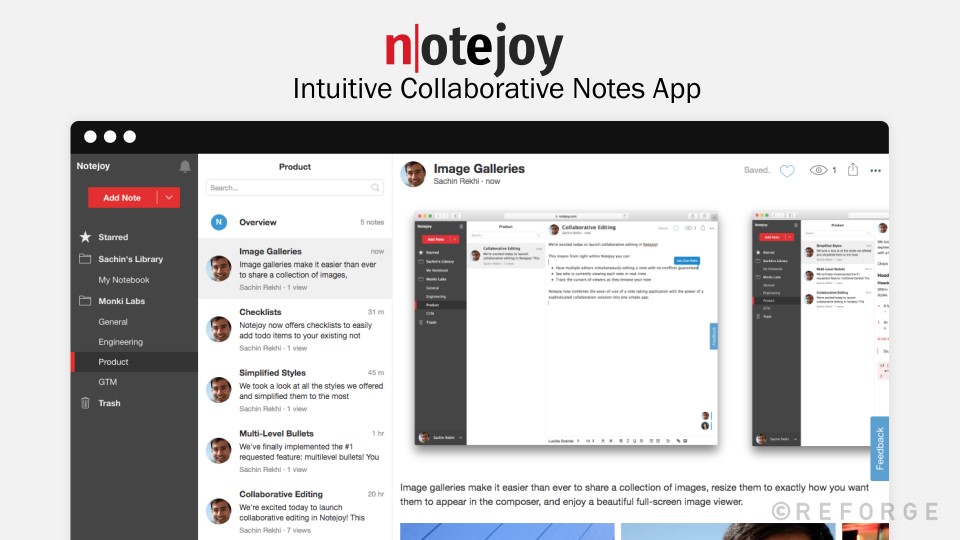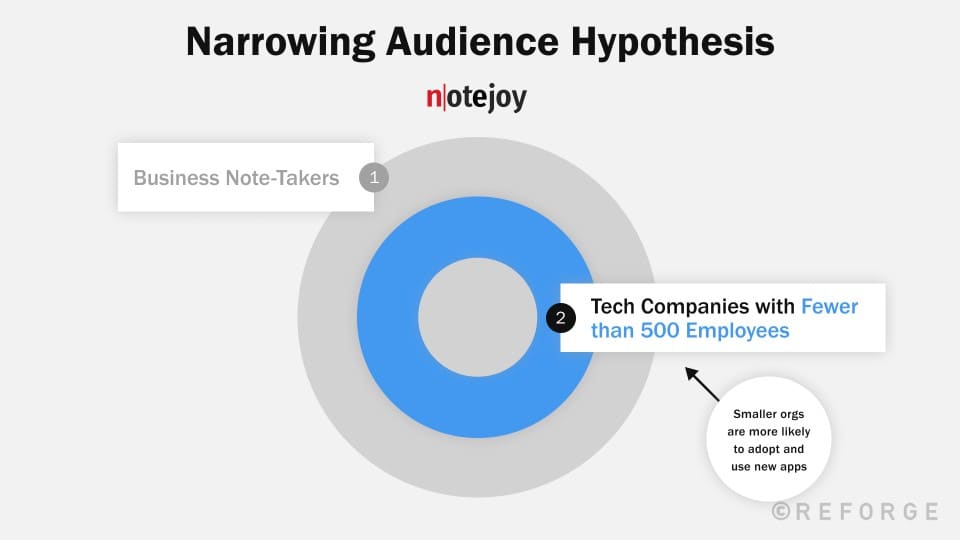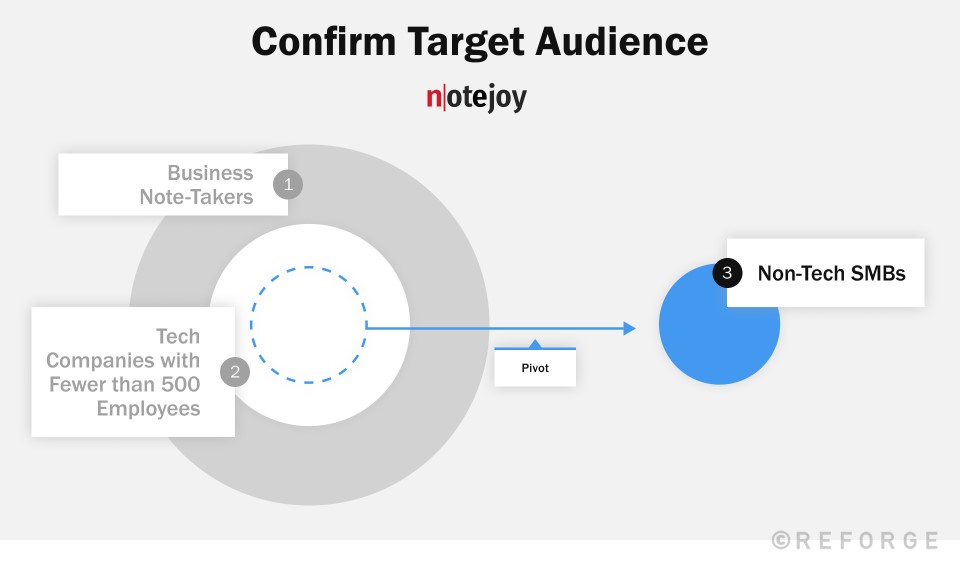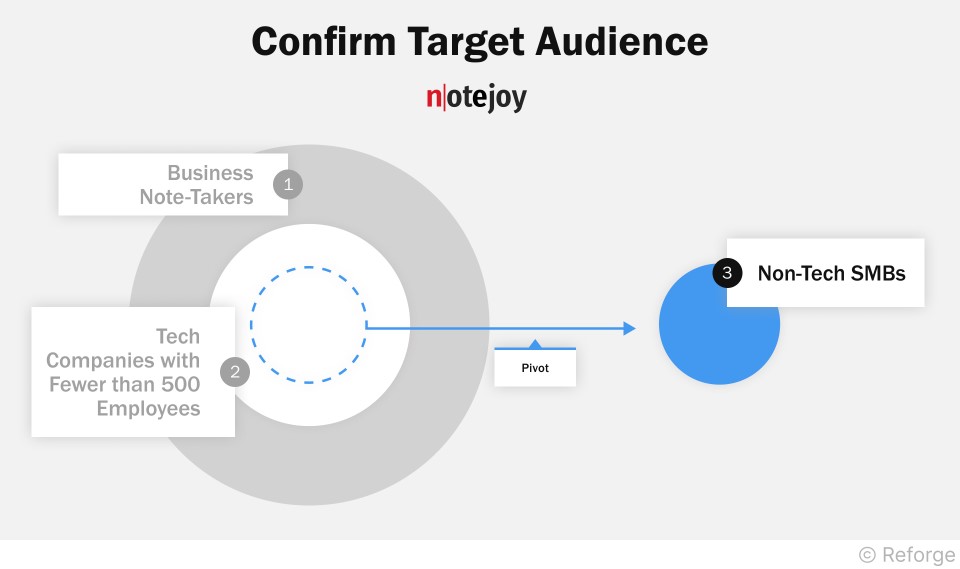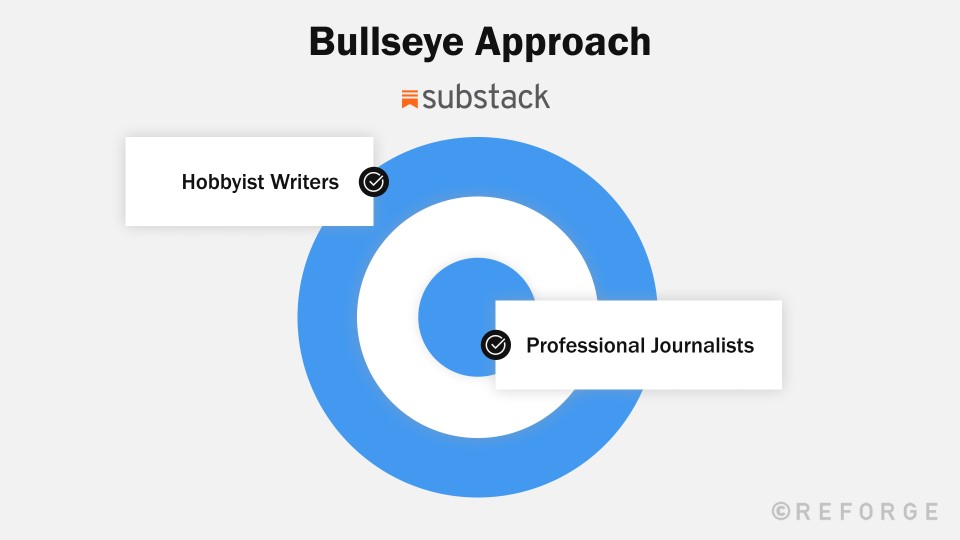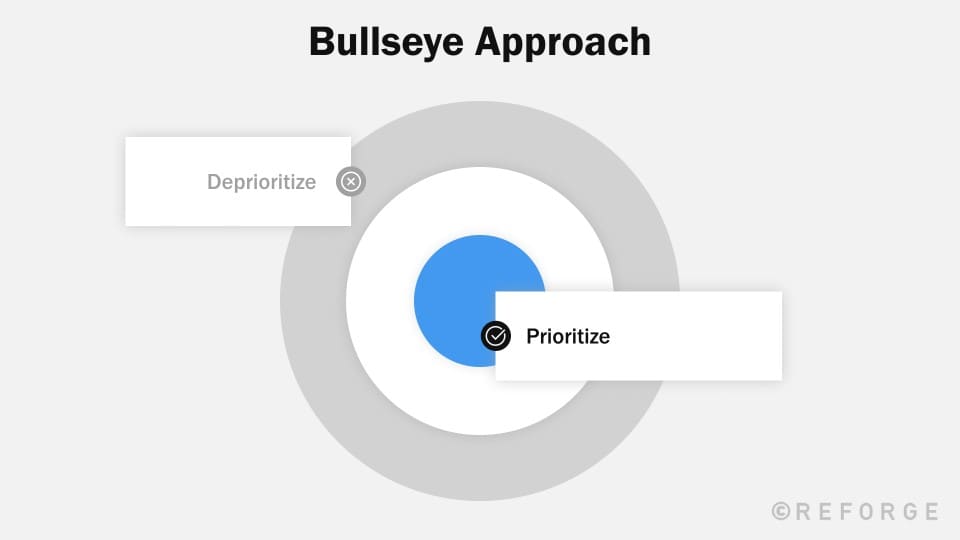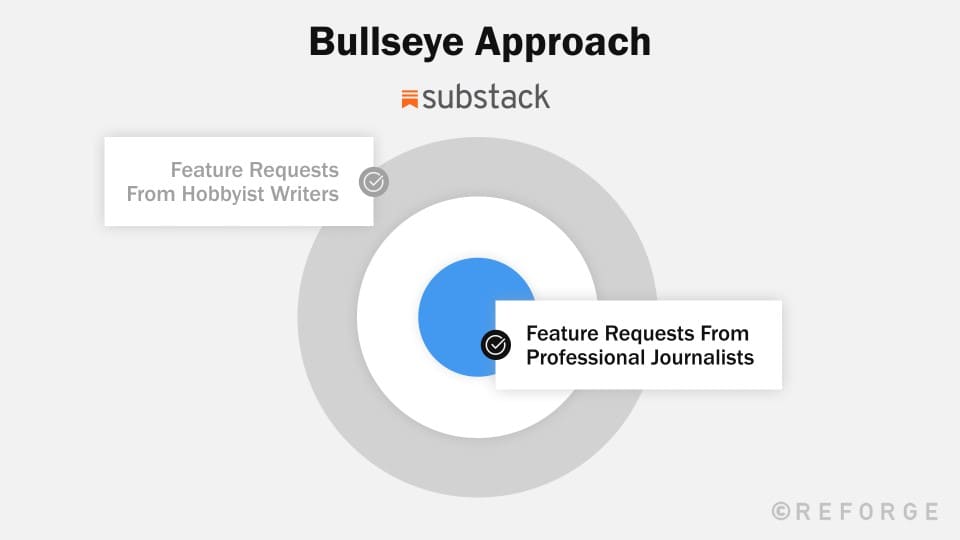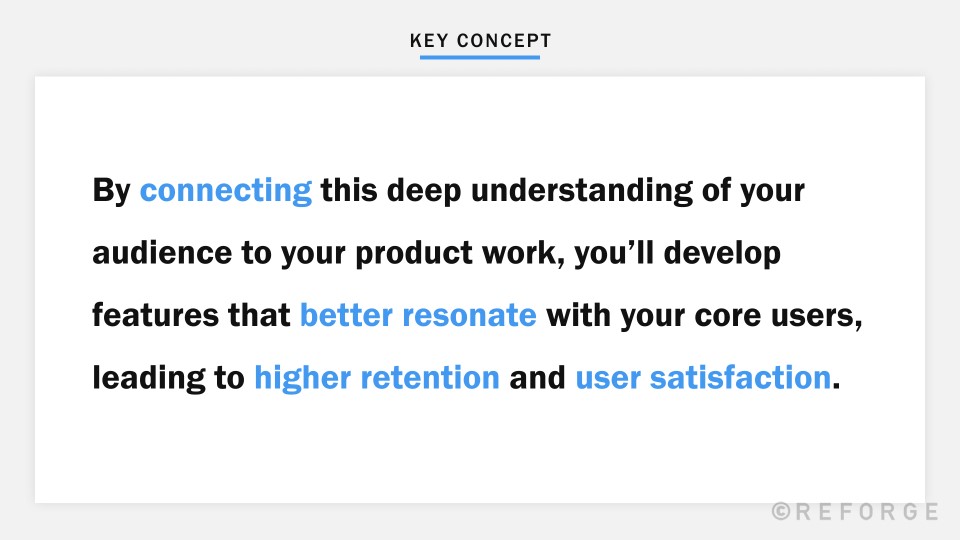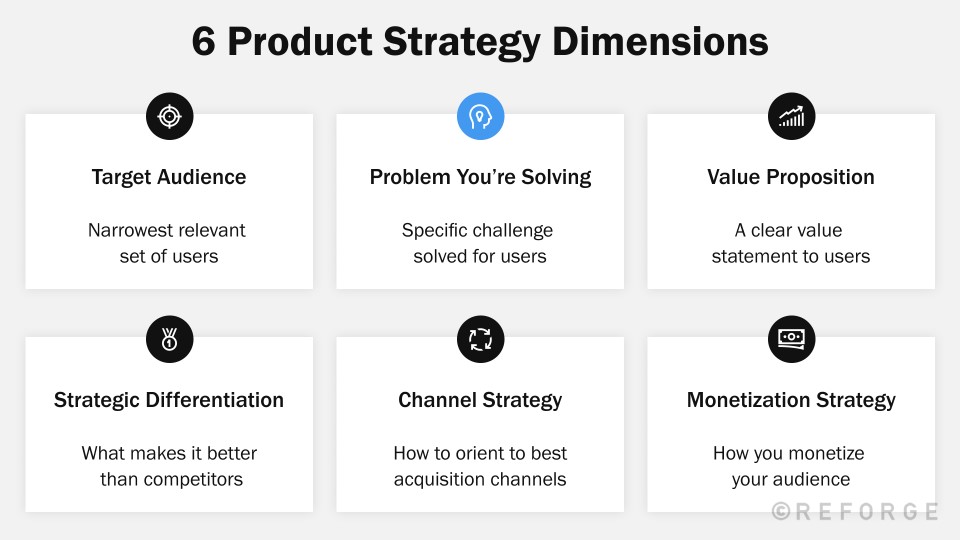
In our module introduction, we talked about how you create leverage as a master PM.
You do this by aligning your work to multiple dimensions of your product strategy.
We also discussed how most PMs have a basic understanding of their product strategy, but lack the next layer of depth.
They need this additional depth of understanding, because it helps them create leverage in 2 ways:
他們需要這層更深的理解,因為這能在兩個方面為他們帶來槓桿效益:
-Knowing what feature work to modify or avoid
——知道哪些功能需要調整或避免
-and knowing what feature work to heavily invest in.
——以及知道哪些功能值得大力投入。
In this lesson, we’ll talk about how to get to that deep level of understanding for the first dimension of Product Strategy: target audience.
在本課中,我們將探討如何深入理解產品策略的第一個面向:目標受眾。
We start with this dimension, because it directly impacts the rest of the product strategy.
我們從這個面向開始,因為它會直接影響產品策略的其他部分。
In other words, changing your target audience directly will change the problem set you can solve for, which then will change the range of value propositions you can offer.
換句話說,直接改變你的目標受眾,將會改變你所能解決的問題範疇,進而影響你所能提供的價值主張範圍。
These three early changes then affect the remaining dimensions of strategy, making them fundamental to deeply understand first.
這三項初期的變革隨後將影響策略的其餘層面,因此首先深入理解它們至關重要。
To illustrate this, let’s examine how Slack’s product strategy would completely change if they focused on online communities instead of workplace collaboration.
為了說明這一點,讓我們來看看如果 Slack 將產品策略的重心從職場協作轉向線上社群,會產生多麼徹底的改變。
Let’s first go through Slack’s current product strategy given their workplace collaboration focus, and then dive into how each strategic dimension would change if they shifted to online communities.
讓我們先來了解 Slack 目前以職場協作為核心的產品策略,接著再深入探討,若他們將重心轉向線上社群,每個策略層面會產生哪些變化。
First, Slack’s current problem they solve in workplace collaboration is facilitating quick decisions and reducing cost of communication.
首先,Slack 目前在職場協作中所解決的問題,是促進快速決策並降低溝通成本。
They do this via their value proposition: saving time by tearing down communication barriers.
他們透過自身的價值主張來實現這一點:打破溝通障礙,為人們節省時間。
They differentiate by finding novel and innovative ways to create worker productivity, especially compared to traditional communication paradigms like email.
他們透過尋找新穎且創新的方式來提升員工的生產力,特別是與傳統的溝通模式如電子郵件相比。
Their dominant acquisition strategy is viral word-of-mouth signups, powered by referrals from existing users, but they also have a dedicated sales team.
他們主要的獲客策略是透過現有用戶的口耳相傳與推薦,帶動病毒式註冊,同時也擁有一支專業的銷售團隊。
As a freemium company, they have a free plan that is supplemented by several tiers of premium paid plans. They allow users to build a habit on the product, and then create an incentive to upgrade after the usage habit is established by limiting the free plan message history to 10,000 messages.
作為一家採用免費增值模式的公司,他們提供一項免費方案,並輔以數個層級的高級付費方案。他們讓用戶能夠在產品上養成使用習慣,隨後透過將免費方案的訊息記錄限制在一萬則,於習慣建立後創造升級的誘因。
Now let’s explore how changing the target audience completely shifts this product strategy.
If Slack focused on serving online communities instead, they’d have a completely different problem to solve. Online communities tend to need strong community moderation capabilities to keep them manageable, and powerful community discovery capabilities to power user engagement.
現在,讓我們來探討一下,當目標受眾改變時,產品策略會如何徹底轉變。
假如 Slack 將重心放在服務線上社群,那麼他們所要解決的問題將會截然不同。線上社群通常需要強大的社群管理功能,以維持社群的秩序,同時也需要高效的社群探索功能,以提升用戶的參與度。
Since the problem solved and value proposition are so closely tied to each other, this then means Slack’s value proposition would pivot to focus on automating the painful parts of community moderation and discovery.
由於所解決的問題與價值主張彼此緊密相連,這也意味著 Slack 的價值主張將會轉向,專注於自動化社群管理與發掘中那些令人頭痛的部分。
Changing the problem being solved also affects the competitors Slack would need to differentiate against, and how they do so. Instead of being great at creating productivity, they’d focus on being great at community management and growth.
改變所要解決的問題,也會影響 Slack 需要區隔的競爭對手,以及他們區隔的方式。與其專注於提升生產力,他們將轉而致力於成為社群經營與成長方面的佼佼者。
Additionally, since online communities generally have lower ability and willingness to pay than companies, Slack would not be able to rely on a sales team-powered acquisition strategy. They’d have to power themselves purely on Word Of Mouth.
此外,由於線上社群通常比企業擁有更低的支付能力與意願,Slack 無法仰賴銷售團隊來推動用戶獲取。他們必須完全依靠口碑傳播來壯大自己。
Finally, this difference in Willingness To Pay also affects their monetization strategy. Since they might get far too low a premium-to-free user ratio to sustain themselves, they might have to pivot to something like an ads-based model instead.
最終,這種「願付費意願」的差異同樣影響了他們的獲利策略。由於付費用戶與免費用戶的比例可能過低,難以維持營運,他們或許不得不轉而採用如廣告為主的營利模式。
In conclusion, changing the target audience heavily affects the other dimensions of your product strategy.
總而言之,改變目標受眾會深刻影響產品策略的其他層面。
Accordingly, it’s critical that you have a deep understanding of who exactly your target audience is.
因此,深入瞭解你的目標受眾究竟是誰,顯得格外重要。
PMs sometimes have a surface-level understanding of target audience, and consider it to be their total addressable audience, the broad base of people the company aspires to eventually serve.
產品經理有時對目標受眾僅止於膚淺的理解,並將其視為公司最終渴望服務的廣大潛在客群。
For example, let’s look at LinkedIn Sales Navigator. Sales Navigator is a premium LinkedIn subscription for salespeople, built to help them find and engage with new prospects and customers.
舉例來說,讓我們看看 LinkedIn Sales Navigator。Sales Navigator 是 LinkedIn 為業務人員打造的高級訂閱服務,旨在協助他們尋找並接觸新的潛在客戶與顧客。
The surface level understanding of Sales Navigator’s target audience is that it encompasses all salespeople.
對於 Sales Navigator 目標受眾的表層理解,是認為它涵蓋了所有的銷售人員。
However, the problem with such a broad, surface-level audience definition is that you end up building an unfocused product.
然而,若僅以如此寬泛且流於表面的方式定義目標受眾,最終只會造就一個缺乏焦點的產品。
When you try to build for too general an audience, you spread your resources too thin and end up not deeply solving any specific audience’s needs.
當你試圖為過於廣泛的受眾打造產品時,你的資源將被過度分散,最終無法深入解決任何特定受眾的需求。
This then leads to weak product-market fit.
這樣一來,產品與市場的契合度便顯得薄弱。
Which then ultimately results in low user retention and satisfaction.
最終導致用戶留存率低落,滿意度不彰。
For example, let's assume you were a PM at LinkedIn Sales Navigator who had a surface level understanding of the target audience. You’d try to build for the general audience of all salespeople.
舉例來說,假設你是 LinkedIn Sales Navigator 的產品經理,對目標受眾僅有粗淺的認識。你可能會嘗試為所有業務人員這個廣泛的族群打造產品。
However, imagine how difficult it would be to create a deep solution for all salespeople.
然而,試想要為所有業務人員打造一個深度解決方案會有多麼困難。
Different types of salespeople can have very different priorities. Account executives, also known as ‘hunters’, focus on ‘hunting’ down new contracts.
不同類型的業務人員,往往有著截然不同的優先考量。業務經理,也被稱為「獵人」,專注於「獵捕」新的合約。
Account managers, also known as ‘farmers’, focus on maintaining and expanding existing contracts. They have completely unique challenges and needs.
客戶經理,又被稱為「農夫」,專注於維繫並拓展現有合約。他們所面臨的挑戰與需求,皆獨具一格。
If you split your time trying to satisfy both, you likely would come up with an unfocused product that doesn’t solve either segment’s needs well.
如果你分散時間試圖同時滿足這兩個族群,你很可能會做出一個缺乏焦點的產品,結果兩邊的需求都無法妥善解決。
Deep understanding of your target audience requires that you understand the narrowest relevant set of users for your product.
要深刻理解你的目標受眾,必須洞悉對你的產品最具關聯性的那一小群用戶。
Defining your audience tightly is key, because it allows you to develop a more tailored product and market towards your best customers, who resonate most strongly with the problems you’re solving, and are thus the most likely to become your product’s evangelists.
精確界定你的目標受眾至關重要,因為這能讓你打造更貼合需求的產品,並將行銷重點放在那些最能感受到你所解決問題的核心顧客身上,而他們也最有可能成為你產品的忠實推廣者。
For example, in LinkedIn Sales Navigator’s initial product, they recognized that they were not serving salespeople in general.
例如,在 LinkedIn Sales Navigator 的初始產品中,他們意識到自己並非在服務所有的業務人員。
Rather, they were best poised to serve ‘hunters’ who did high value B2B deals in tech and/or finance.
相反地,他們最適合服務於那些在科技及/或金融領域進行高價值 B2B 交易的「獵人」。
Armed with this understanding, they focused on developing specifically for this highly narrow audience.
懷抱著這份深刻的理解,他們專注於為這個極為狹窄的目標受眾量身打造產品。
They deprioritized “farmer” account management features.
他們將「農夫」帳戶管理功能的優先順序調低了。
And instead, they prioritized “hunter” account executive features.
反而,他們優先考慮了「獵人型」業務經理的功能。
This included features like TeamLink, which allowed ‘hunters’ to extend their network of potential warm connections into a company.
這其中包括了像 TeamLink 這樣的功能,讓「獵人」們能夠將他們潛在的溫暖人脈網絡延伸至一家公司內部。
This resulted in Sales Navigator finding a strong customer foothold, giving them a strong, retaining user base of ‘hunters’ to grow with.
這使得 Sales Navigator 找到了堅實的客戶立足點,擁有一群忠誠且持續使用的「獵人」用戶群,得以隨之成長茁壯。
To advance your understanding from surface to deep, you have to filter down from your general audience into your narrowest target audience.
要將你的理解從表層推進到深層,你必須從廣泛的大眾篩選,聚焦到最精準的目標受眾。
We call this method the ‘bullseye approach," because you can visualize each narrowing down of your audience as a concentric ring, ultimately creating a ‘bullseye’ type of visual.
我們稱這種方法為「靶心法」,因為你可以將每一次縮小目標受眾的範圍想像成同心圓,最終形成一個如靶心般的視覺效果。
The bullseye approach to target audience definition solves the problem of having too loose an audience definition by starting with the most general audience possible first, and then narrowing it down until you’ve gotten to requisite depth - in other words, until you’ve gotten to an audience where you have strong Product Market Fit.
「靶心法」用於界定目標受眾,能有效解決受眾定義過於寬泛的問題。其方法是先從最廣泛的大眾開始,然後逐步收窄範圍,直到深入到所需的層次——換句話說,直到你找到與產品高度契合的核心受眾為止。
Indicators of PMF vary by company, but some common indications are high retention…a meaningfully positive NPS score…and/or significant organic traffic.
產品市場契合的指標因公司而異,但一些常見的跡象包括高留存率、有意義的正向淨推薦分數(NPS),以及顯著的自然流量。
The bullseye approach has three high level steps:
靶心法包含三個高層步驟:
-defining your total addressable audience
-定義你的總可觸及受眾
-narrowing your audience based on segments you seem logically poised to better serve
-根據你看似更有能力服務的細分族群,進一步縮小你的目標受眾
-and confirming your target audience using live data.
——並以即時數據確認你的目標受眾。
This approach is captured on the Product Strategy Map, under Target Audience, so that you have an actionable template to fill out for yourself.
這種方法已經在產品策略地圖的「目標受眾」部分有所體現,讓你擁有一份可付諸行動的範本,能夠親自填寫。
We strongly encourage you to fill these in during the content walkthroughs to better solidify and apply your knowledge.
我們強烈建議你在內容導覽過程中填寫這些項目,以更鞏固並應用你的知識。
Documenting your process through the template also gives you an easily shareable deliverable, which you can use to align your team or leadership later on.
透過範本記錄你的流程,也能產出一份易於分享的成果文件,日後你可以用來協調團隊或領導層的共識。
To assist in your understanding, we also provide examples of how two companies would apply the template: Linkedin Sales Navigator and Substack.
為了協助您的理解,我們同時提供兩家公司如何應用此範本的範例:Linkedin Sales Navigator 與 Substack。
Substack is an online publishing platform for subscription newsletters. It provides a solution for writers who want to get paid for writing by allowing readers to pay for regular subscriptions.
Substack 是一個線上出版平台,專為訂閱制電子報而設。它為希望透過寫作獲得報酬的作者提供了解決方案,讓讀者能夠付費訂閱,定期閱讀他們的作品。
Now, let’s go back to how the bullseye approach works.
現在,讓我們回到靶心法的運作方式。
First, start off by defining your broadest audience - the aspirational circle of who you want to serve over time.
首先,請先界定你最廣泛的受眾——也就是你希望隨著時間推移所服務的理想族群。
This is anyone you "could" serve or who "could" get value from your product.
這包括所有你「可能」服務到,或「可能」從你的產品中獲得價值的人。
This has parallels to your Total Addressable Market, a number that’s almost always findable in your investor or board decks since it is a key financial metric.
這與你的總可服務市場(Total Addressable Market)有著相似之處,這個數字幾乎總能在你的投資人或董事會簡報中找到,因為它是一項關鍵的財務指標。
The key difference is that instead of looking for the addressable market dollar size, you’re more focused on figuring out who your addressable audience consists of.
關鍵的差異在於,你不再只是關注可觸及市場的金額規模,而是更專注於弄清楚你的目標受眾究竟是哪些人。
For example, at LinkedIn Sales Navigator, the ‘broad audience’ was all sales professionals.
例如,在 LinkedIn Sales Navigator,所謂的「廣泛受眾」指的是所有銷售專業人士。
The broad audience was all writers, because their product could fundamentally serve any person who wanted a publishing platform.
廣泛的受眾是所有作家,因為他們的產品基本上能夠服務任何想要發表作品的平台需求者。
Then, narrow down your audience.
接著,縮小你的目標受眾範圍。
Consider which audience segments your product may be particularly well suited to serve. These make up your ‘concentric rings’ of the bullseye.
思考哪些受眾族群特別適合你的產品,這些族群便構成了你靶心上的「同心圓」。
Narrowing your audience is typically done by filtering on several common attributes:
縮小目標受眾範圍,通常是透過篩選幾項常見屬性來完成的
-Use case: the specific use case for which they derive value from your product or service.
使用情境:他們從您的產品或服務中獲得價值的具體使用情境。
-Role: the role or department in which they fall within the organization adopting your solution.
角色:他們在採用您解決方案的組織中所屬的職位或部門。
-Demographics: typical demographic attributes like age, gender, race, income level, education level, marital status, and more.
人口統計:典型的人口統計屬性如年齡、性別、種族、收入水平、教育程度、婚姻狀況等。
-Firmographics: specific attributes of the company that you are targeting, including industry, employee size, department size, business model, and more.
公司特徵:指你所鎖定公司的特定屬性,包括產業別、員工規模、部門規模、商業模式等。
-Psychographics: specific psychographic attributes of potential customers, including things like willingness to try new solutions, personality characteristics, personal goals, and more.
心理特徵:潛在顧客所具備的特定心理屬性,包括願意嘗試新解決方案的態度、個性特質、個人目標等。
This narrowing step might involve several layers of narrowing. For example, at LinkedIn, they narrowed down their audience first to B2B, then to B2B sales professionals that manage more than $100k ACV contracts, and finally to B2B account executives that ‘hunt’ for >$100k ACV contracts.
這個聚焦的過程可能包含多層次的篩選。以 LinkedIn 為例,他們首先將目標受眾縮小至 B2B 領域,接著聚焦於管理超過十萬美元年合約價值(ACV)的 B2B 銷售專業人士,最後更精確地鎖定於專門「開發」超過十萬美元 ACV 合約的 B2B 客戶經理。
Their logic was that their product’s main value was providing social selling information, which would have the highest willingness to pay from companies that did high value deals.
他們的邏輯是,他們產品的主要價值在於提供社群銷售資訊,而這項資訊對於那些經常進行高價值交易的公司來說,願意付費的意願最高。
Then, within the sales audience, account executives would receive the most value, since key LinkedIn Sales Navigator benefits, like a way to contact the user and pre-sales intelligence, were more relevant to them than to account managers.
在銷售族群之中,業務代表將會獲得最大的價值,因為 LinkedIn Sales Navigator 的關鍵優勢——例如聯絡用戶的方式與售前情報——對他們而言,比對客戶經理來說更加相關。
At Substack, they narrowed down their audience first to writers who wanted to get paid, because their product was designed around monetizing written content.
在 Substack,他們首先將目標受眾縮小至那些希望獲得報酬的寫作者,因為他們的產品正是圍繞著將文字內容變現而設計的。
They knew they could design Substack’s user experience to encourage readers to pay and subscribe, making it the most attractive platform for writers who specifically wanted to get paid for writing.
他們深知自己能夠設計出一套能夠鼓勵讀者付費訂閱的 Substack 使用者體驗,讓這個平台成為那些渴望以寫作獲得報酬的作家們最具吸引力的選擇。
They then narrowed it down further to writers who wanted to be paid and who published on a regular basis, because their product was designed to support subscription-based writing.
接著,他們進一步將範圍縮小至那些希望獲得報酬、並且定期發表作品的作家,因為他們的產品正是為了支援訂閱制寫作而設計的。
So to recap, in step 2 of the bullseye approach, you’re narrowing down your audience based on your hypothesis of who your product is best set up to serve.
總結來說,在靶心法的第二步,你會根據自己對產品最適合服務對象的假設,進一步縮小目標受眾的範圍。
In the final step of the bullseye approach, you’ll refine the audience hypothesis by looking at actual data on what customer segments seem to be most attractive to you.
在靶心法的最後一步,你將透過檢視實際數據,進一步細緻化對目標受眾的假設,找出哪些顧客族群對你而言最具吸引力。
These attributes are: 這些特質包括:
-Resonance with value proposition: how well does the existing value proposition resonate with this audience?
與價值主張的共鳴:現有的價值主張與這一受眾的共鳴程度如何?
-Willingness to pay: can you effectively monetize against this audience based on evidence of their willingness to pay, available budget, derived value, etc?
付費意願:根據他們的付費意願、可用預算、所獲得的價值等證據,你是否能夠有效地從這個受眾中獲利?
-Strongest delivered value: which customer segment is the most engaged and the happiest with your solution? NPS and retention are good proxies of this.
最強大的價值傳遞:哪一個顧客族群對你的解決方案最投入、最滿意?NPS(淨推薦值)與留存率是評估這一點的良好指標。
-Channel strategy: can you effectively and affordably reach this target customer segment via your available marketing channels?
通路策略:你能否透過現有的行銷渠道,有效且經濟地觸及這一目標客群?
-Strategic fit: does this audience fit the overall strategic vision for the company, especially in light of where you ultimately want to expand with future products and services?
策略契合度:這個目標受眾是否符合公司整體的策略願景,特別是考量到你最終希望未來的產品與服務能夠拓展至哪些領域?
When you evaluate your live customer data to find which segments are most attractive, you’ll commonly end up with one of two outcomes:
當你評估現有客戶數據,以找出最具吸引力的細分族群時,通常會出現以下兩種結果之一:
-1. You realize your target audience is even narrower than your original hypothesis.
你意識到你的目標受眾比你最初假設的還要更為狹窄。
-2. You realize your target audience is different from what you thought.
你意識到你的目標受眾與你原先所想的截然不同。
In some cases, the target audience is refined.
在某些情況下,目標受眾會被進一步細分。
For example, LinkedIn Sales Navigator discovered that tech and finance account executives engaged particularly well after launch, due to the fact that LinkedIn overall had a high density of tech and finance members.
舉例來說,LinkedIn Sales Navigator 發現,在產品推出後,科技與金融領域的業務主管特別積極參與,這是因為 LinkedIn 整體上擁有大量來自科技與金融產業的會員。
These sales professionals got more value out of the product, because they had more prospects already on there. This signaled to the Sales Navigator team to refine their target audience to ‘B2B ‘hunters’ with more than $100k ACV deal size in tech/finance.’
這些銷售專業人士因為已經有更多潛在客戶在平台上,所以能從這項產品中獲得更大的價值。這一點讓 Sales Navigator 團隊意識到,應該將目標受眾進一步聚焦為「在科技或金融領域,年合約價值超過十萬美元的 B2B『獵人型』銷售人員」。
Substack also had a refined target audience in this step.
Substack 在這個階段同樣擁有明確且精緻的目標受眾。
They found that professional journalists benefitted the most from Substack’s offerings. Since they were already professionally writing, they needed to find a platform that could financially support them, which wasn’t the case for hobbyists who only occasionally wrote articles.
他們發現,專業記者最能從 Substack 的服務中受益。由於他們本就以寫作為業,因此需要尋找一個能夠為他們提供經濟支持的平台,而這對於僅偶爾撰寫文章的業餘愛好者來說,則並非如此。
In other cases, the target audience is pivoted.
在其他情況下,目標受眾則會有所轉變。
For example, consider Notejoy.
舉例來說,請想想 Notejoy。
Notejoy is a collaborative notes app for teams and individuals. It differentiates itself primarily on the simplicity of the user experience, being highly intuitive to use.
Notejoy 是一款為團隊與個人打造的協作筆記應用程式。它的主要特色在於使用體驗的簡潔,操作直觀易懂。
When narrowing down their target audience, Notejoy originally thought they would best serve small tech companies. These smaller companies likely would not have a formal notes software already in place, and their tech-savviness would make them more likely to adopt something new.
在縮小目標受眾範圍時,Notejoy 起初認為他們最適合服務小型科技公司。這些規模較小的公司很可能尚未正式導入筆記軟體,而他們對科技的熟悉也讓他們更有可能嘗試採用新工具。
However, Notejoy found that its most engaged users were actually non-tech small-and-medium-sized businesses like law firms and agencies, because they had the least tech-savviness. As a result, Notejoy’s intuitiveness and speed was highly appealing to them.
然而,Notejoy 發現最投入使用他們產品的用戶,其實是像律師事務所和代理機構這類非科技領域的中小型企業,因為這些用戶對科技並不熟悉。因此,Notejoy 的直觀操作與高效速度對他們而言格外具有吸引力。
In contrast, users in tech didn’t value the intuitiveness as highly as they did powerful features.
相較之下,科技領域的使用者並不像他們重視強大功能那樣重視直覺性。
Additionally, an important nuance to note in the bullseye process is that refining your target audience does not necessarily mean you are turning people away.
此外,在「靶心法」過程中有一個重要的細節需要注意:精煉你的目標受眾,並不代表你正在排斥其他人。
For example, Substack isn’t actively turning away hobbyist writers or writers who don’t care about getting paid. They’re still perfectly happy to have them sign up as writers on the platform.
舉例來說,Substack 並不會主動拒絕那些業餘作家,或是不在意報酬的寫作者。他們依然非常樂意讓這些人註冊成為平台上的寫作者。
Rather, target audience means that you actively prioritize developing for a certain subgroup of your users for whom your product resonates most, and deprioritize feature development for those outside their user group.
所謂目標受眾,指的是你主動優先為某一特定用戶子群開發產品,這群人對你的產品最有共鳴;而對於不屬於這個用戶群體的人,則將功能開發的優先順序降低。
So for example, Substack would prioritize feature requests from professional journalists over feature requests that specifically serve hobbyist writers.
舉例來說,Substack 會優先考慮專業記者提出的功能需求,而非專門服務業餘寫作者的功能請求。
So to summarize, in this lesson, we covered how to develop a deep understanding of your target audience.
總結來說,在本課中,我們探討了如何深入了解你的目標受眾。
Using the bullseye approach, you went from the typical high-level understanding of your general audience to deep understanding of your narrowest target audience.
運用靶心法,你已從對大眾受眾的典型高層次理解,深入到對最精準目標受眾的深刻洞察。
When you connect this deep understanding to your product work, you’ll develop features and products that better resonate with your core users, leading to higher retention and user satisfaction.
Without this deep understanding, you run the risk of developing less focused products, leading to poorer product outcomes.
當你將這份深刻的理解融入產品工作時,所開發的功能與產品將更能引起核心用戶的共鳴,進而提升用戶留存率與滿意度。
倘若缺乏這樣的深度理解,你所打造的產品便可能失去焦點,導致成果不如預期。
In the next lesson, we’ll cover how to develop a deep understanding of the problem you’re solving.
在下一堂課中,我們將探討如何深入理解你所要解決的問題。
In this lesson, we covered how to develop a deep understanding of your target audience.
在本課程中,我們探討了如何深入理解你的目標受眾。
Using the bullseye approach, you went from the typical high-level understanding of your general audience to deep understanding of your narrowest target audience.
透過靶心法,你從對一般受眾的高層次理解,逐步深入到對最核心目標受眾的深刻洞察。
When you connect this deep understanding to your product work, you’ll develop features and products that better resonate with your core users, leading to higher retention and user satisfaction.
Without this deep understanding, you run the risk of developing less focused products, leading to poorer product outcomes.
當你將這份深刻的理解融入產品開發時,所打造的功能與產品將更能引起核心用戶的共鳴,進而提升用戶留存率與滿意度。
若缺乏這樣的深度理解,你所開發的產品將可能失去聚焦,導致較差的產品成果。
You've completed this lesson. How useful was it?
Great work! You've completed this lesson. How useful was it for you?
做得好!你已經完成了這一課。這對你來說有多實用呢?
